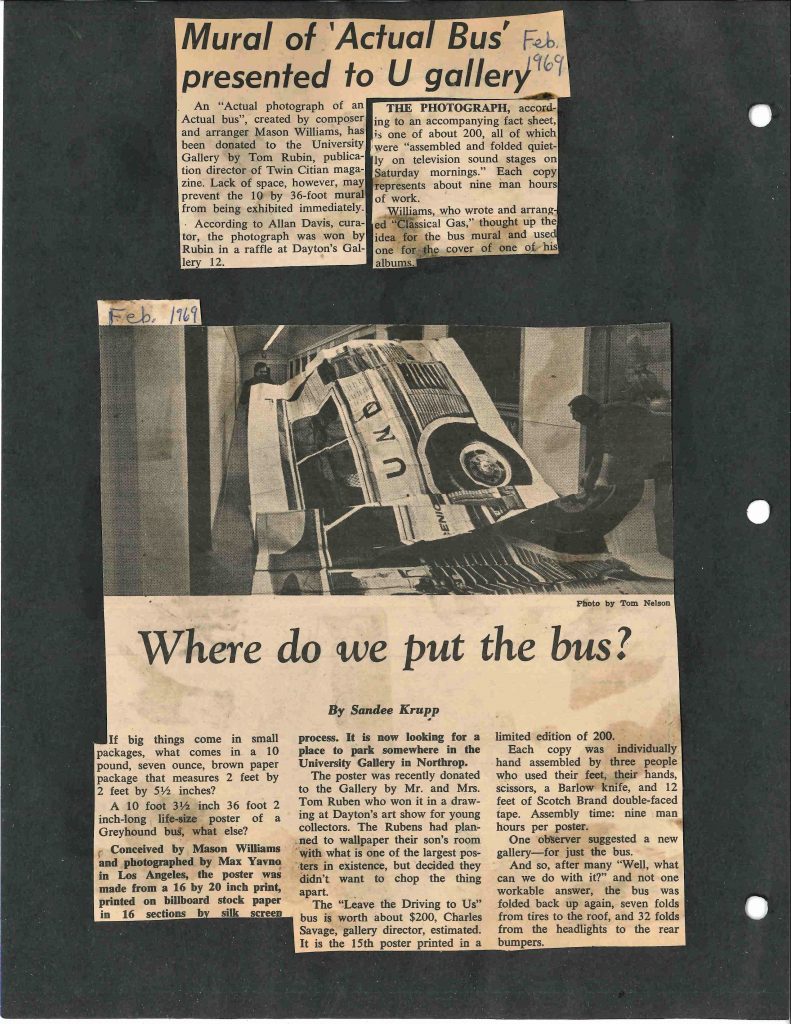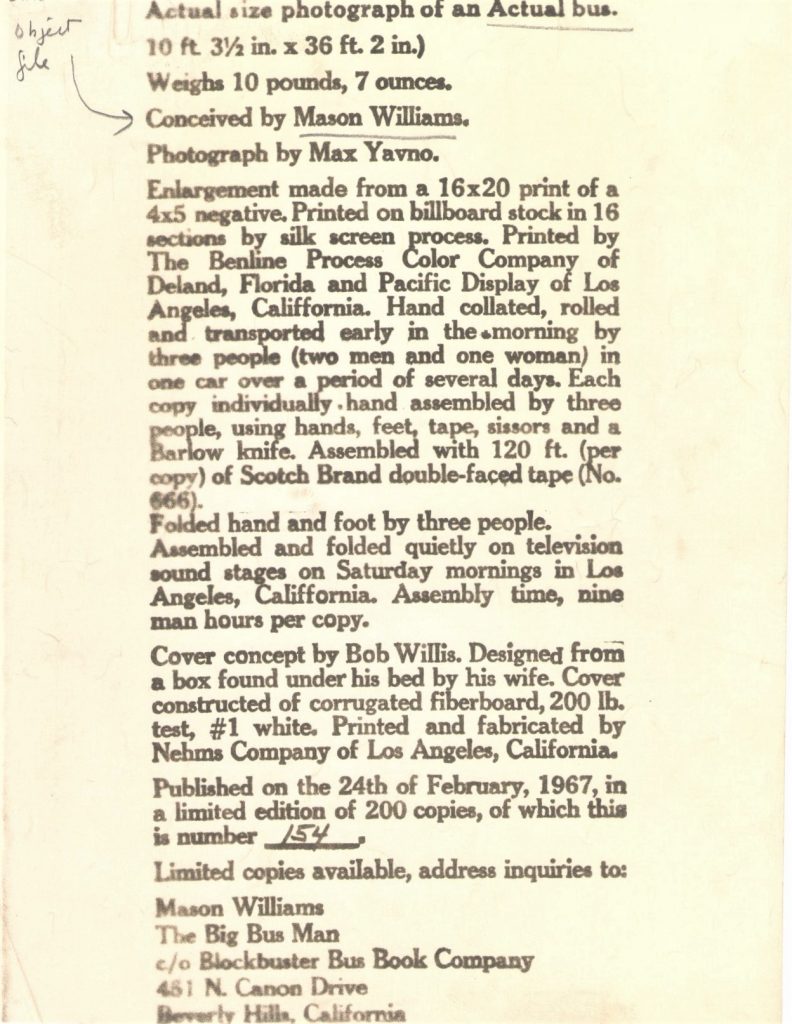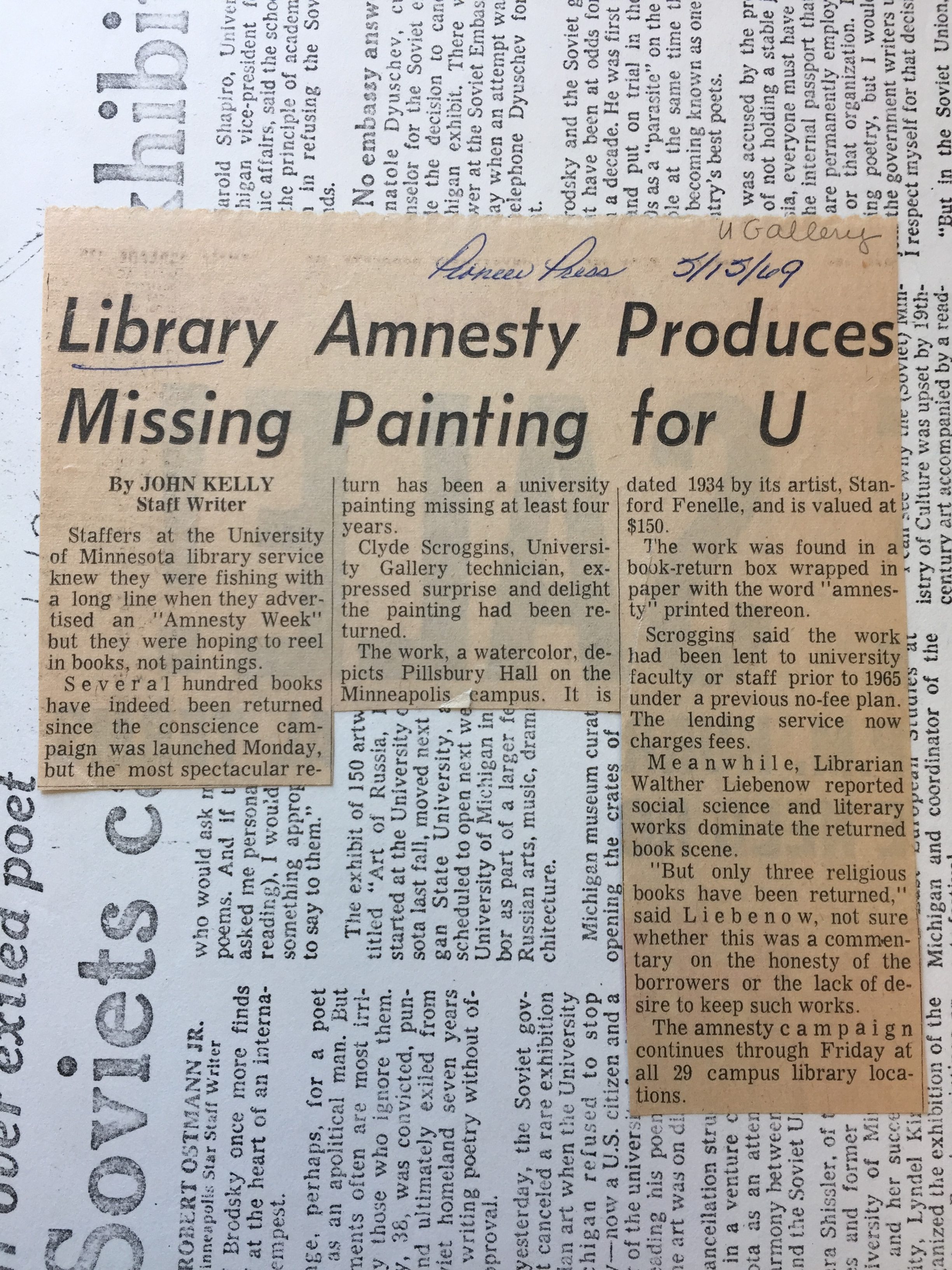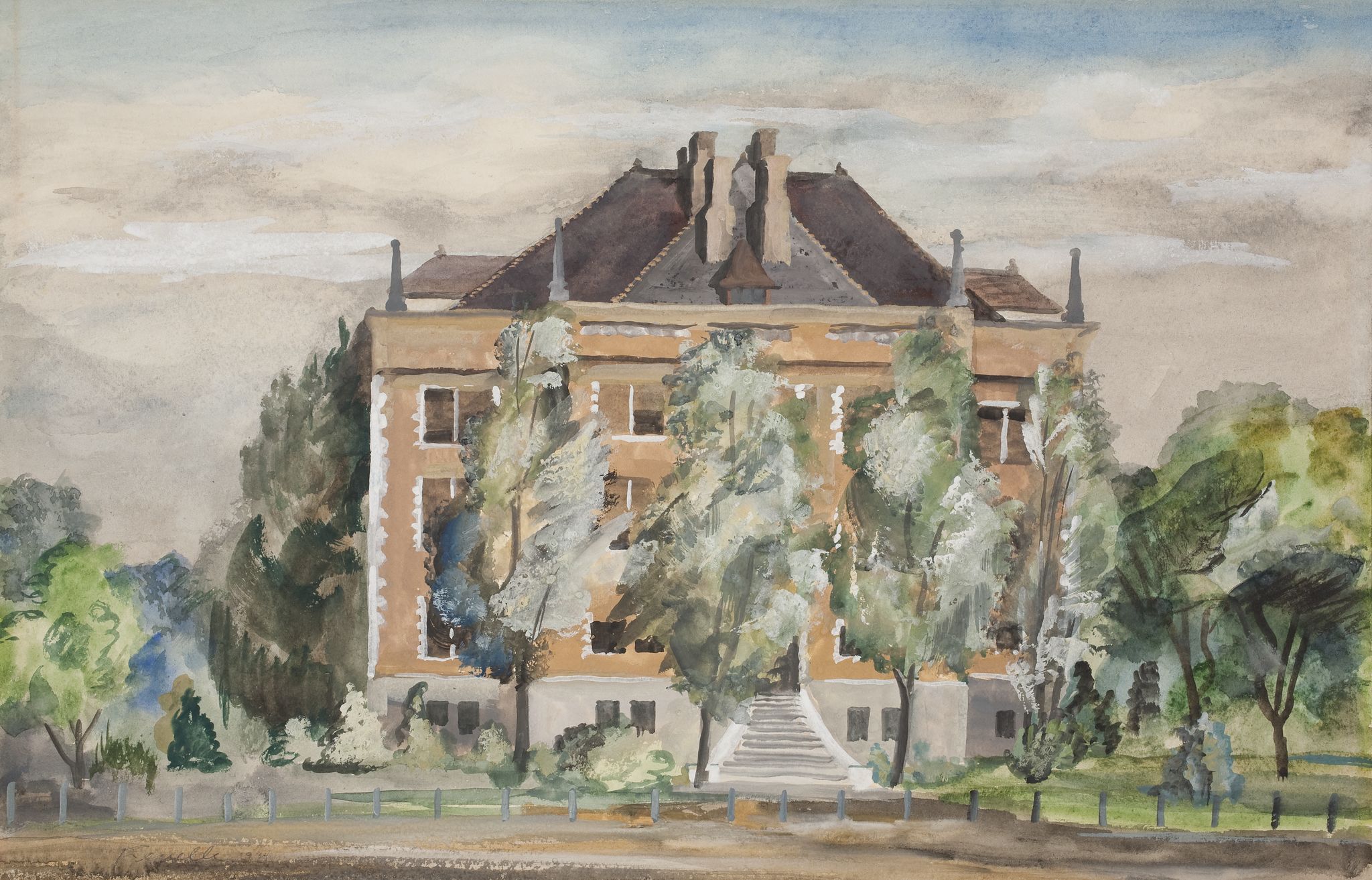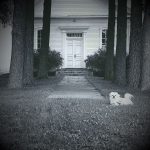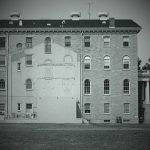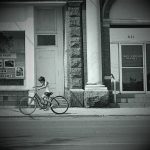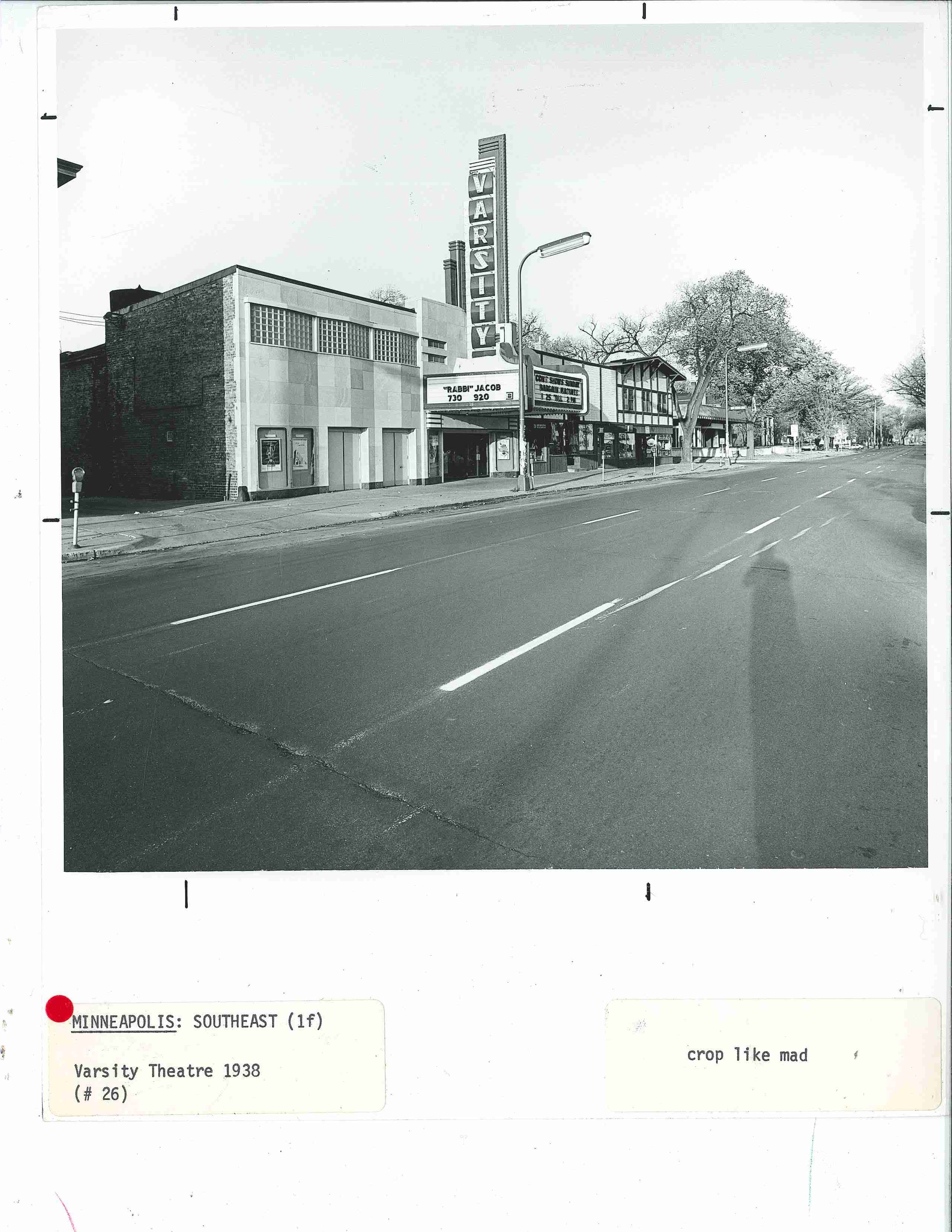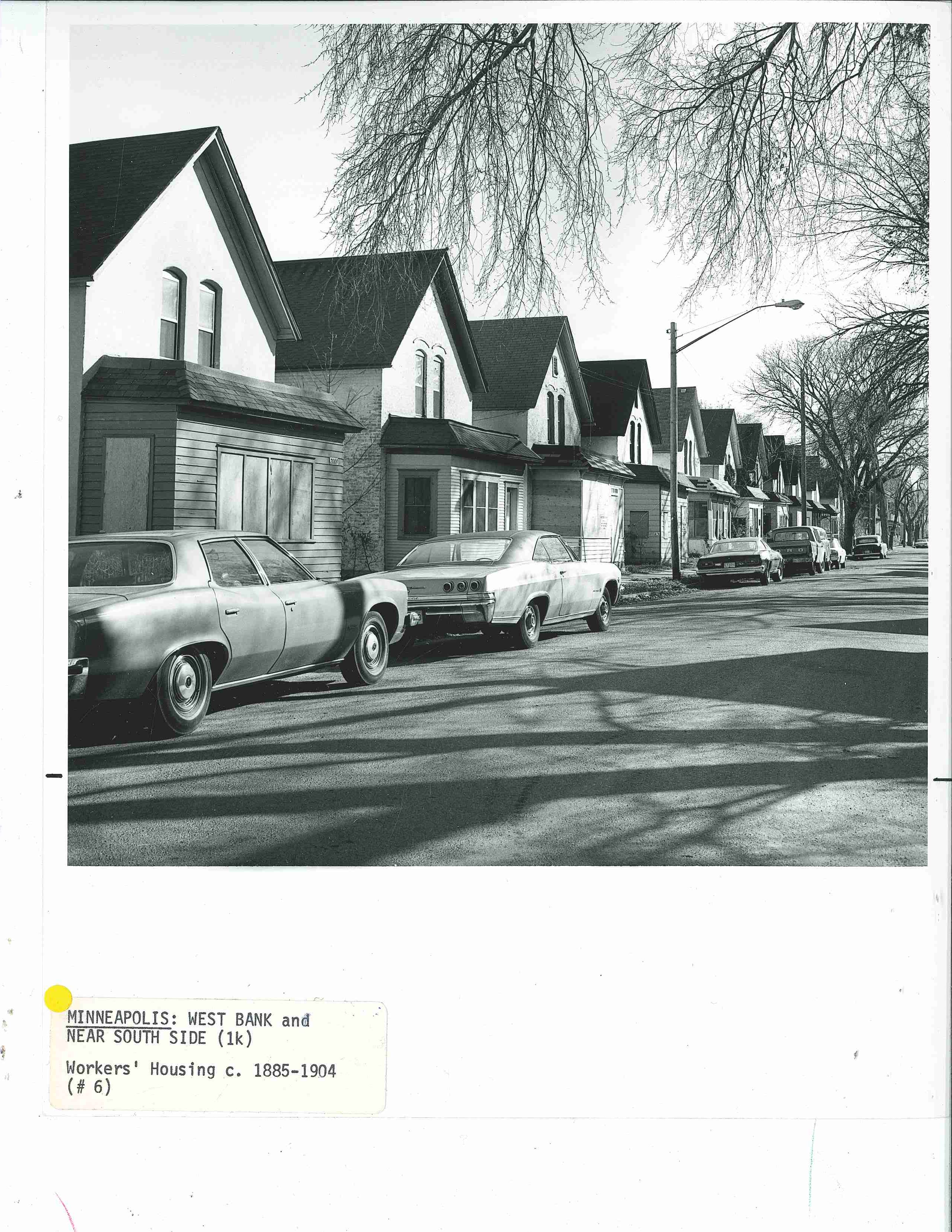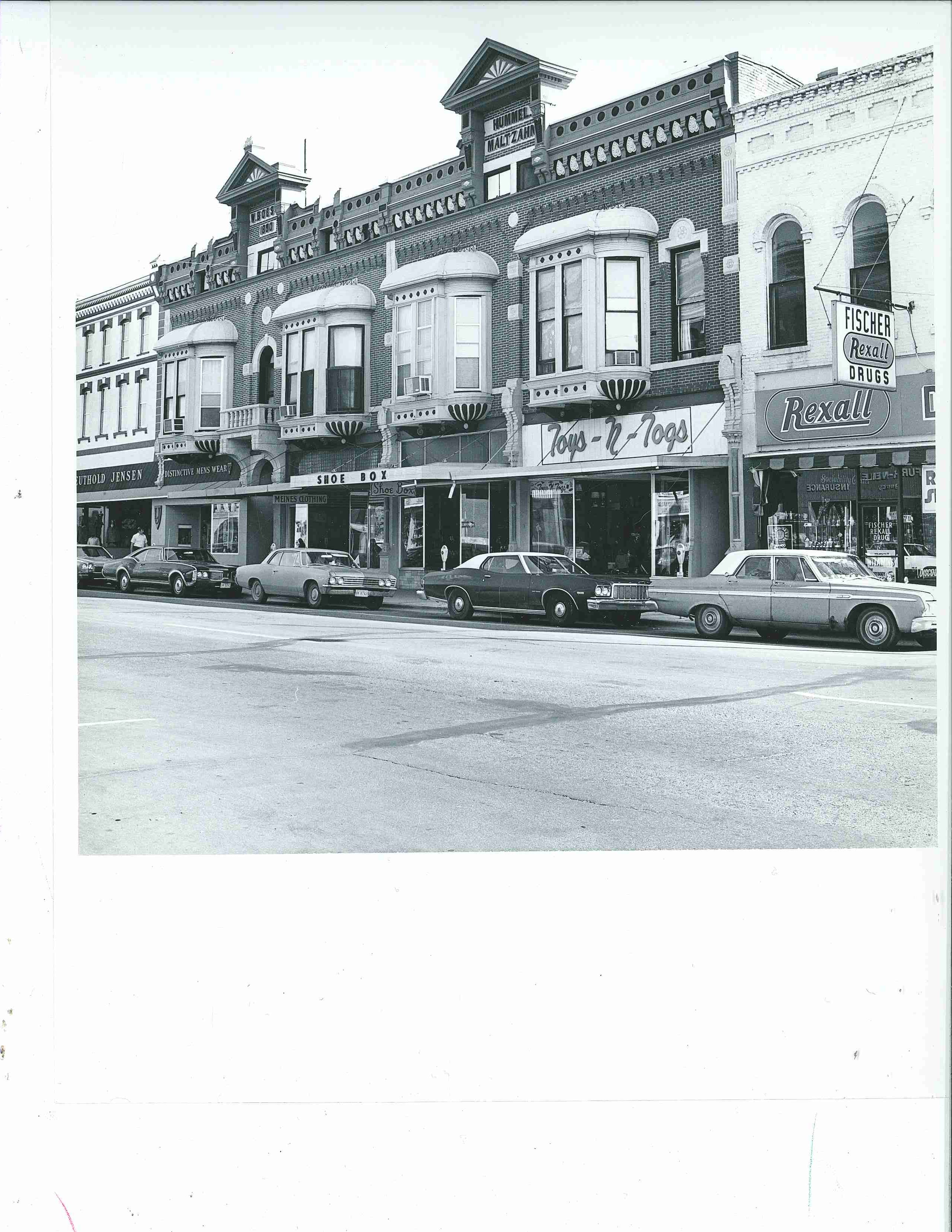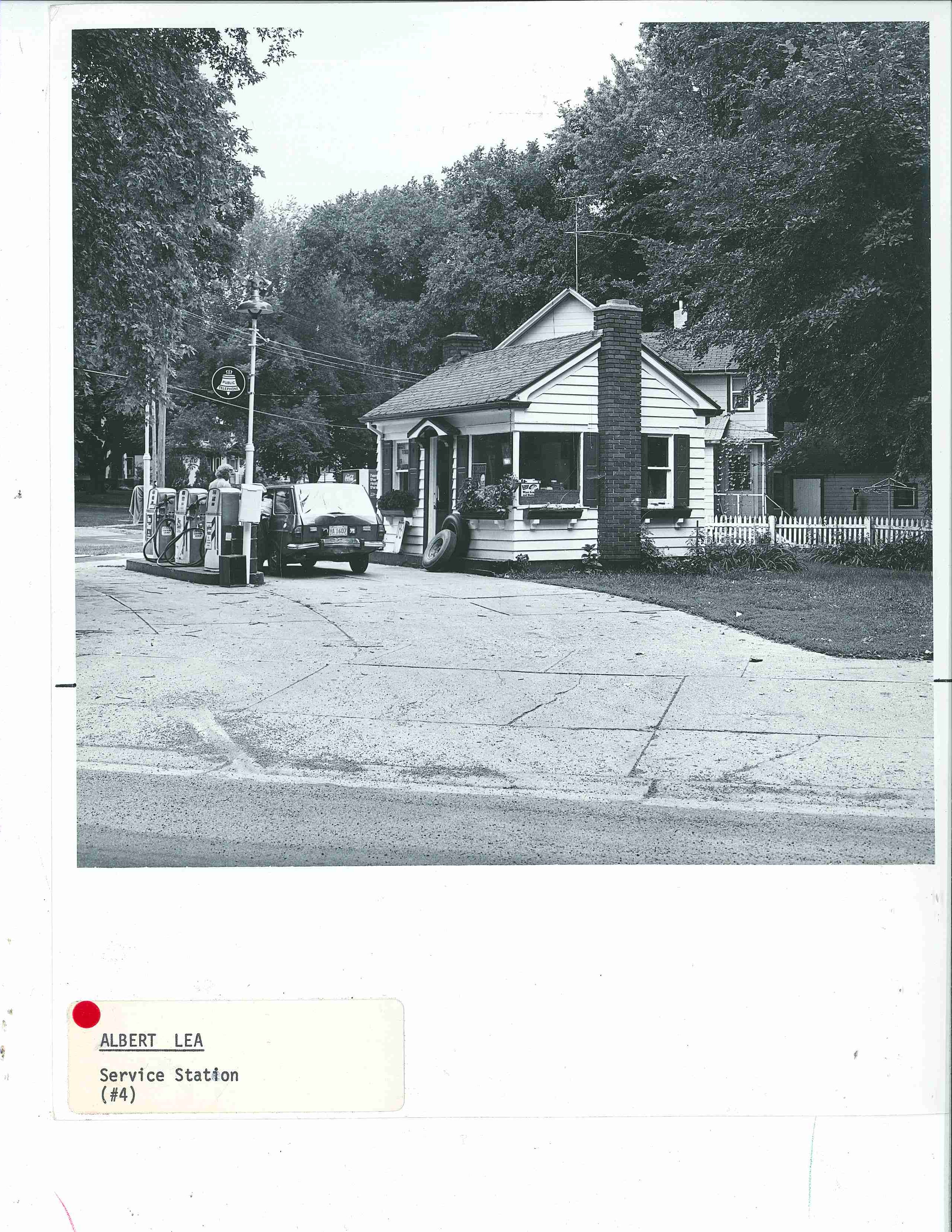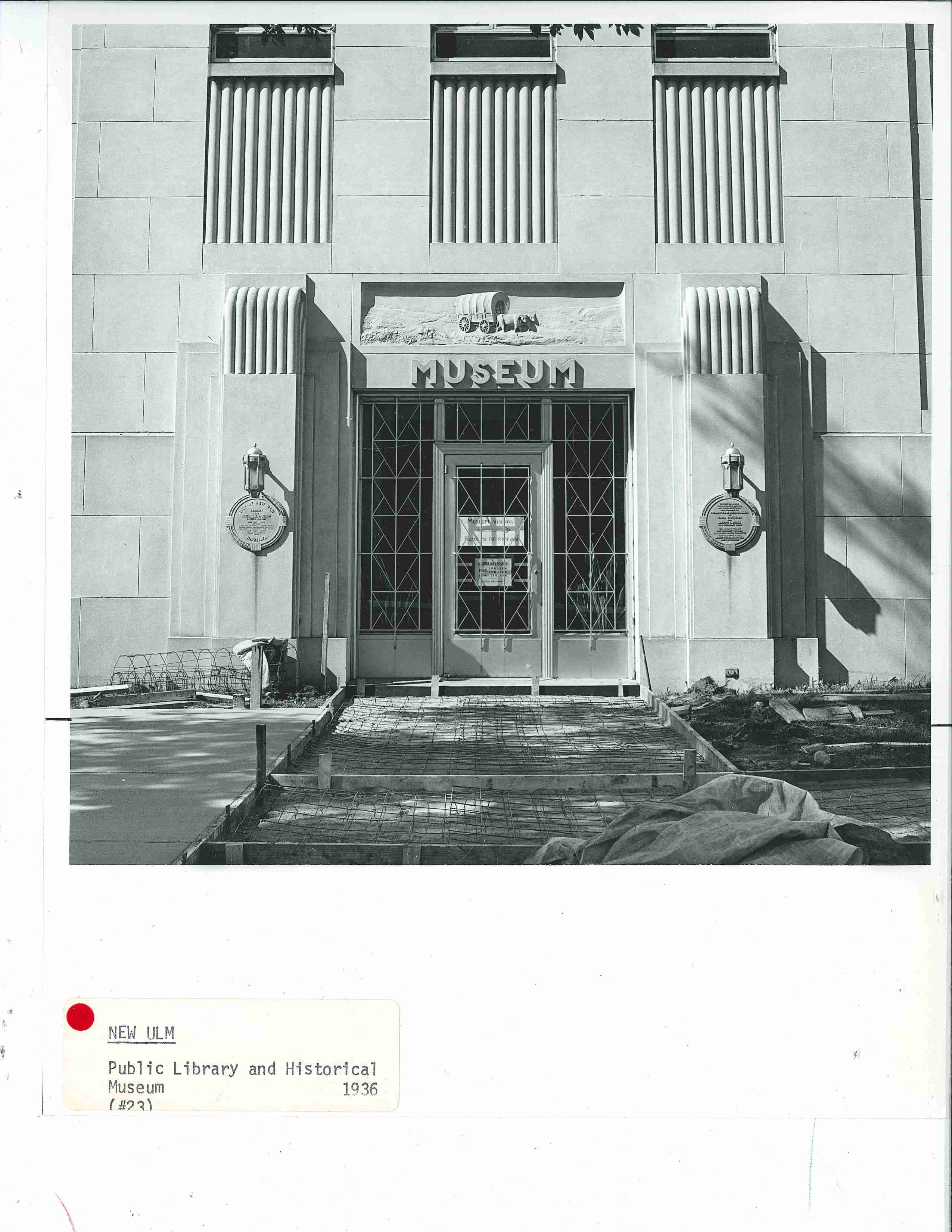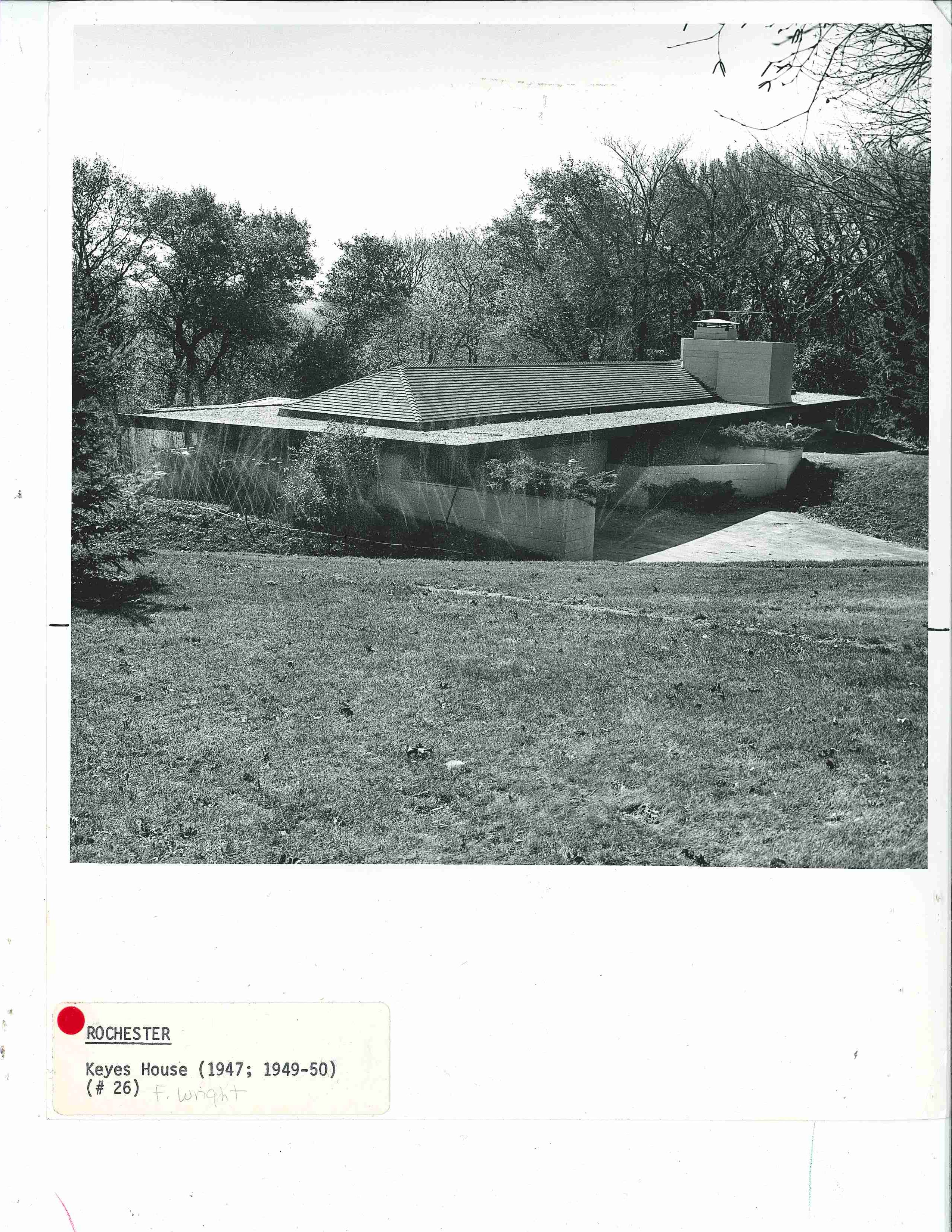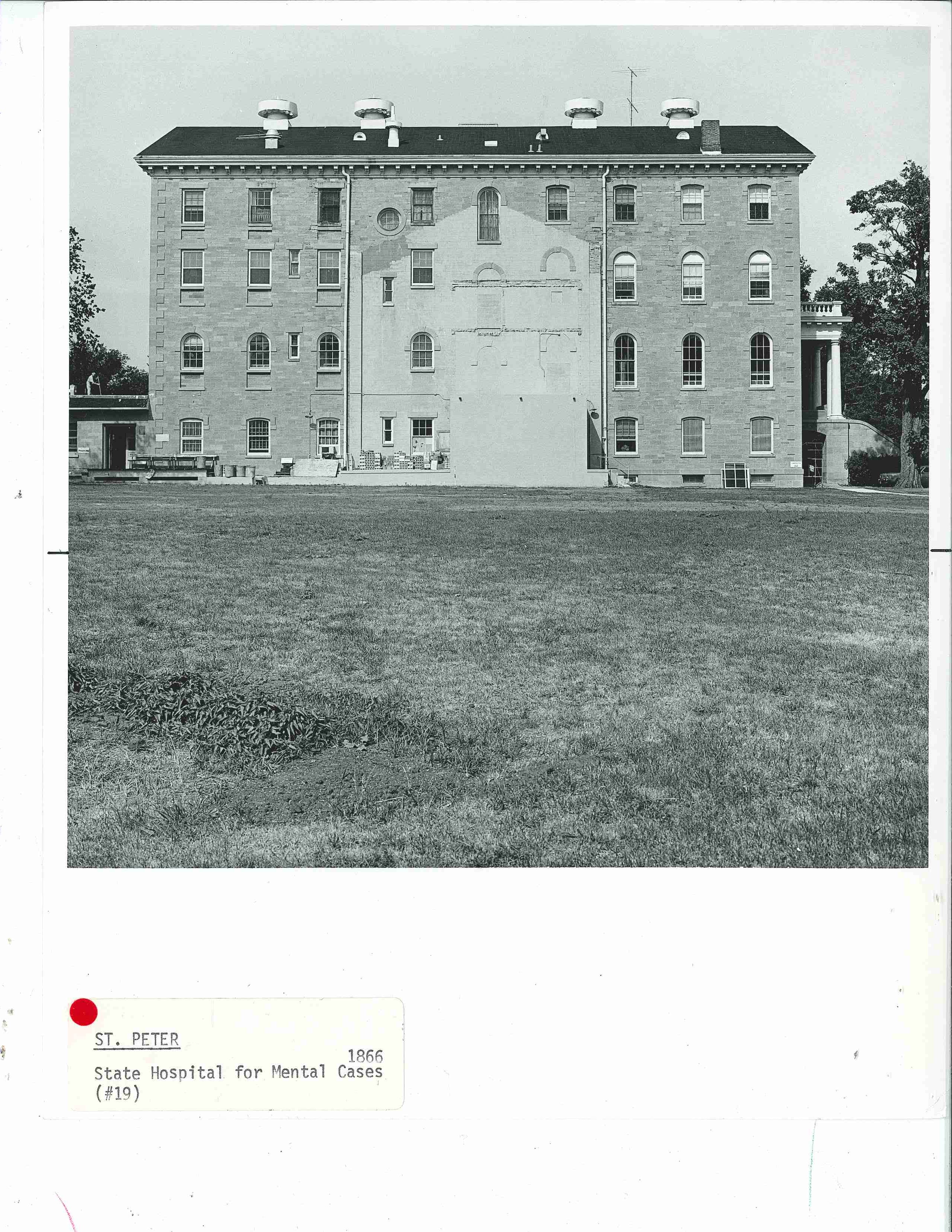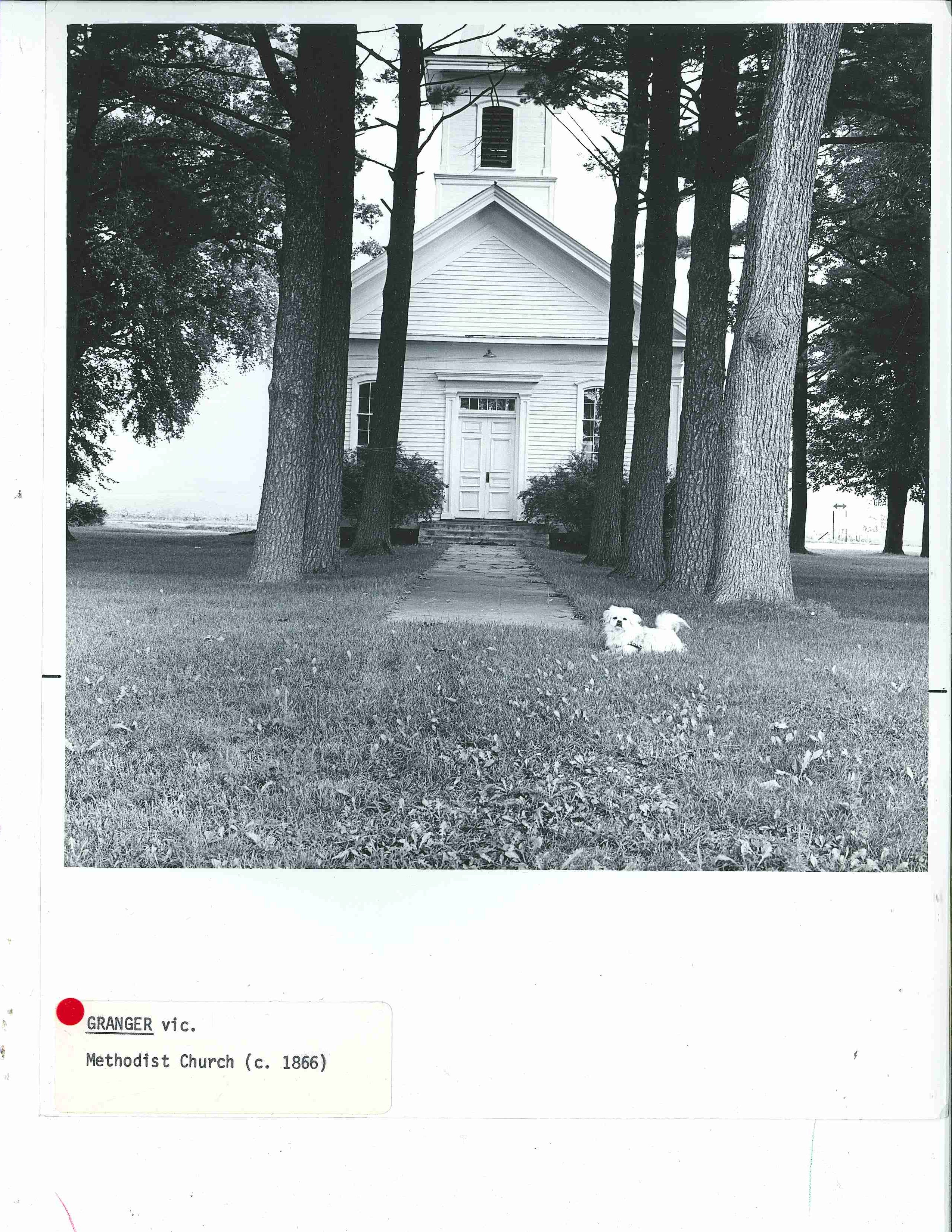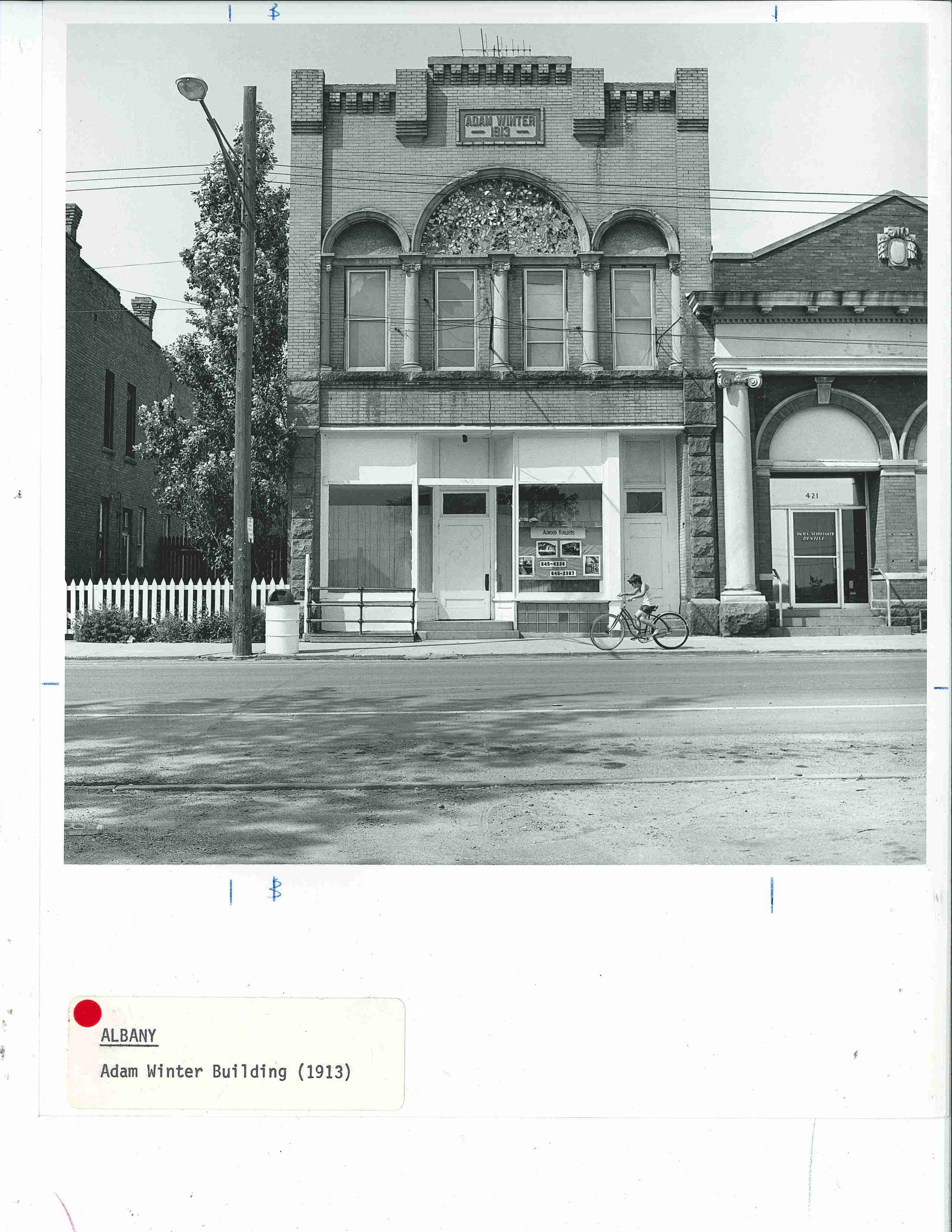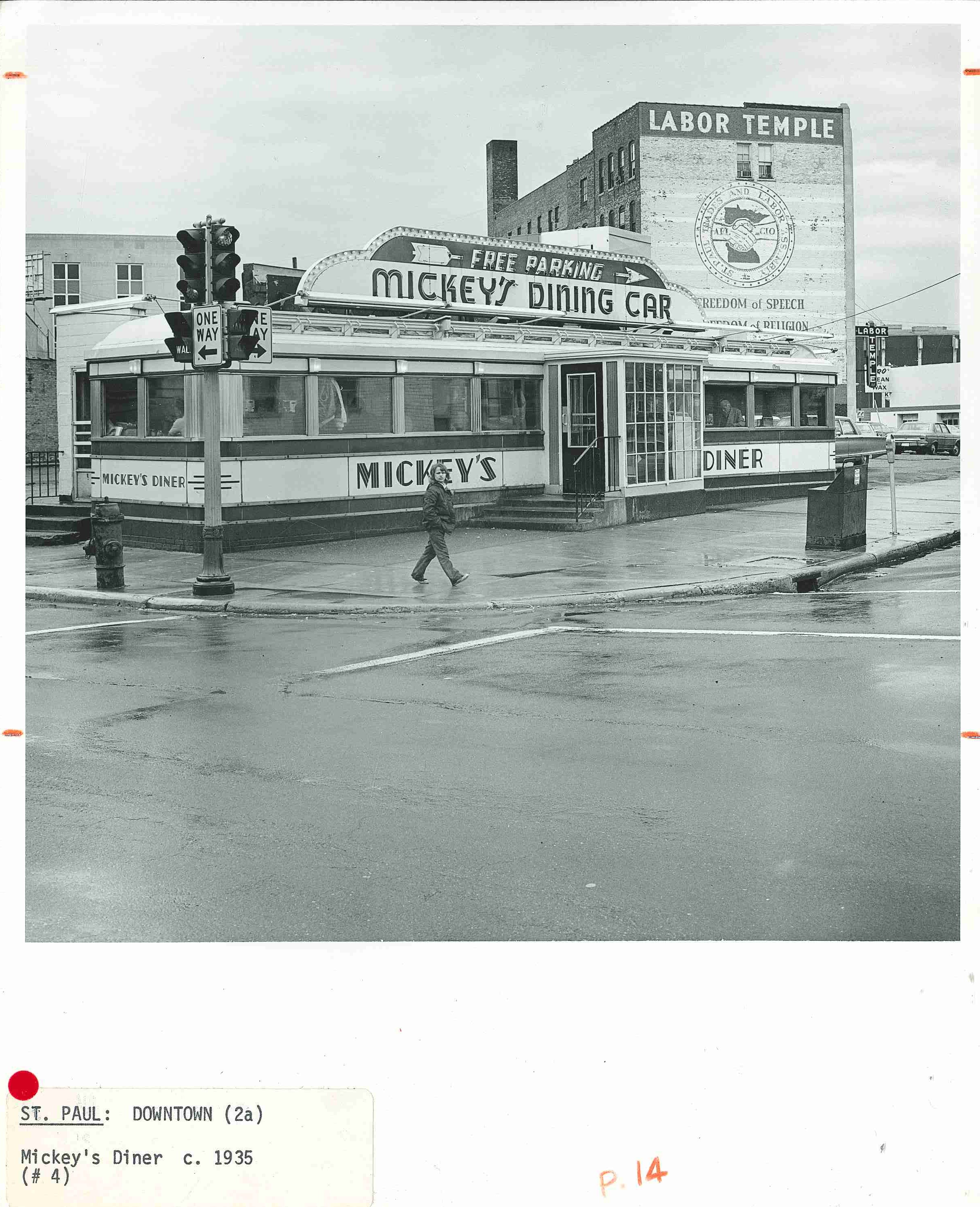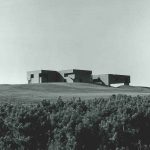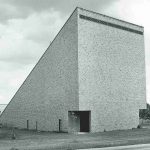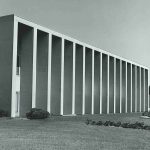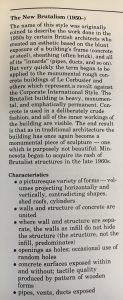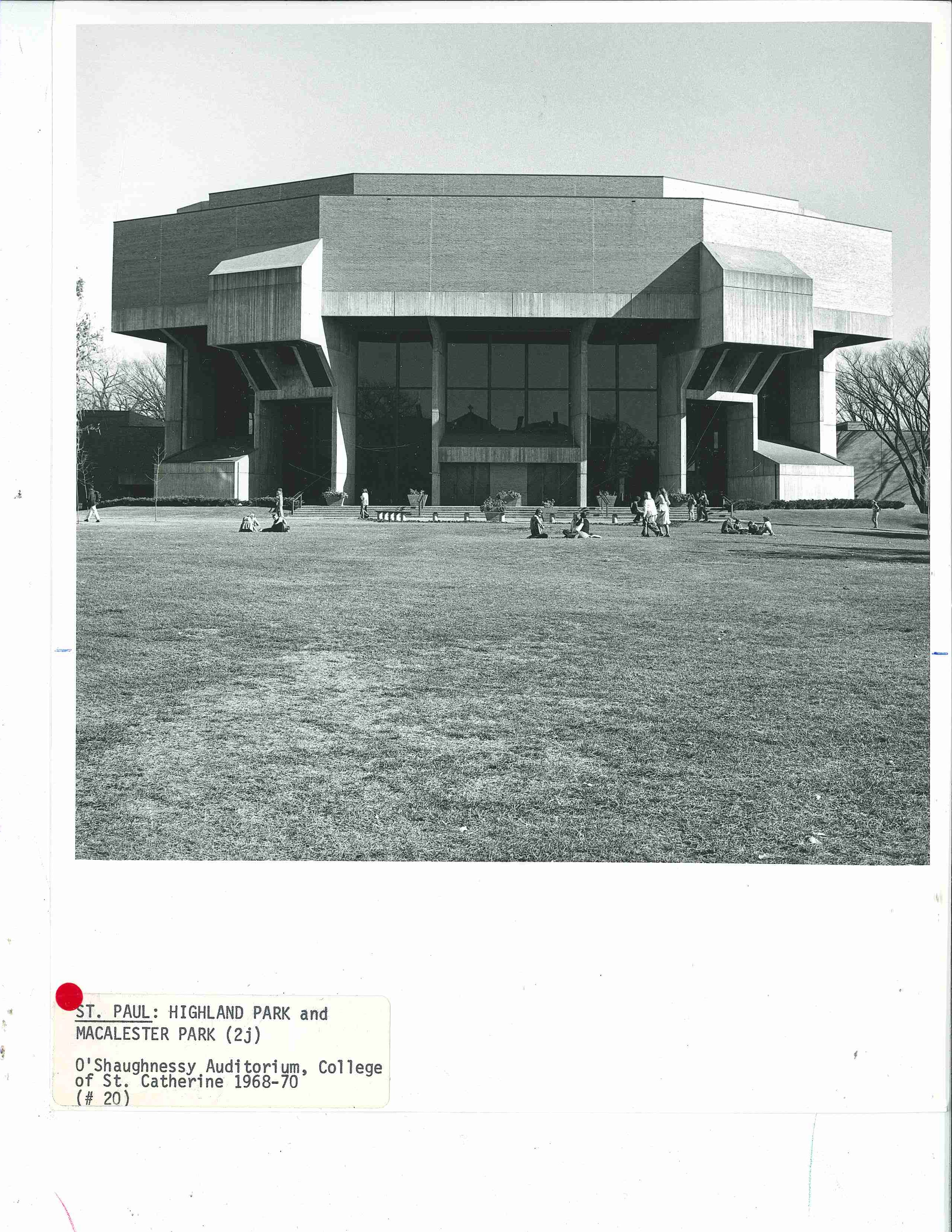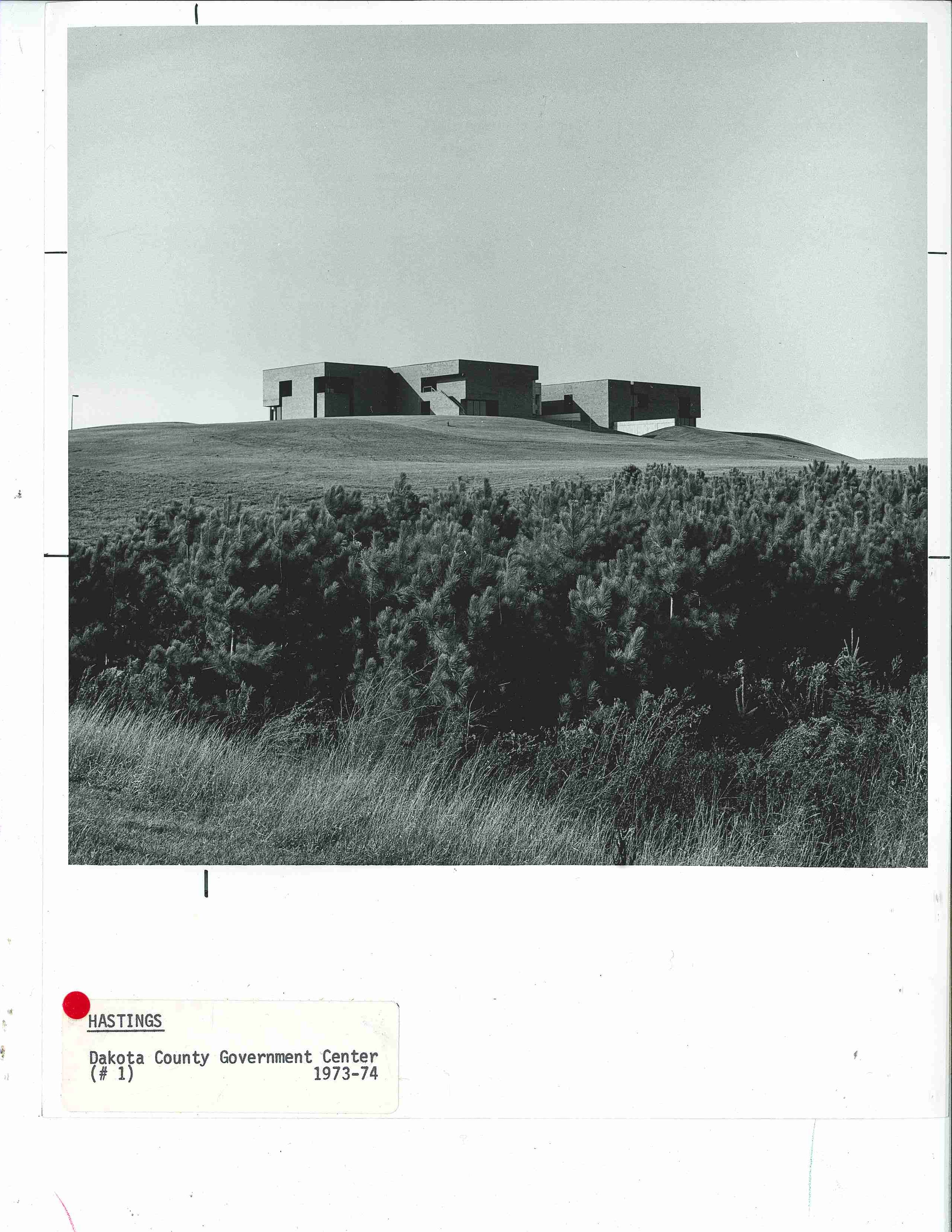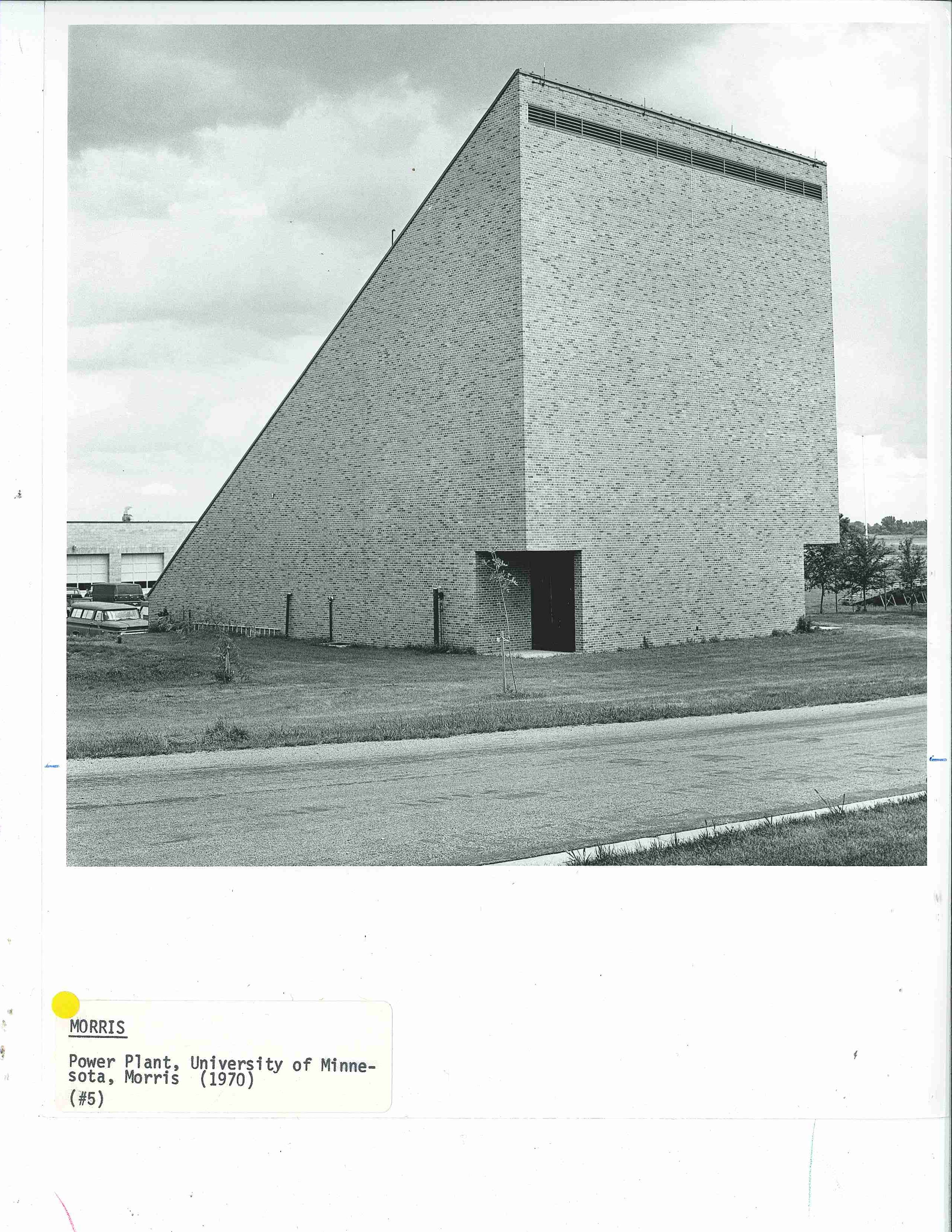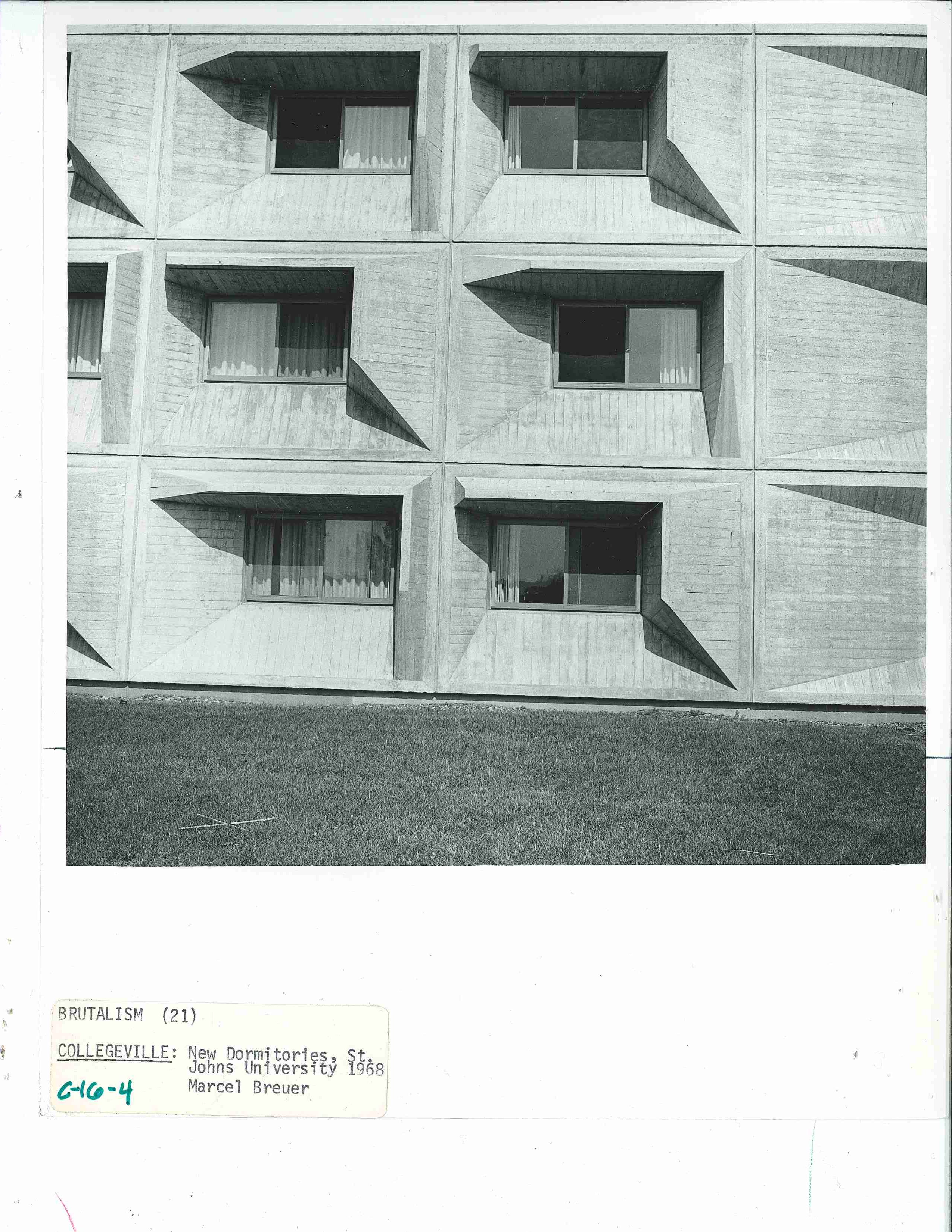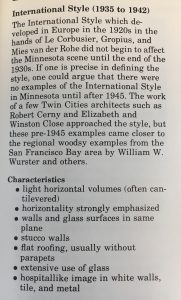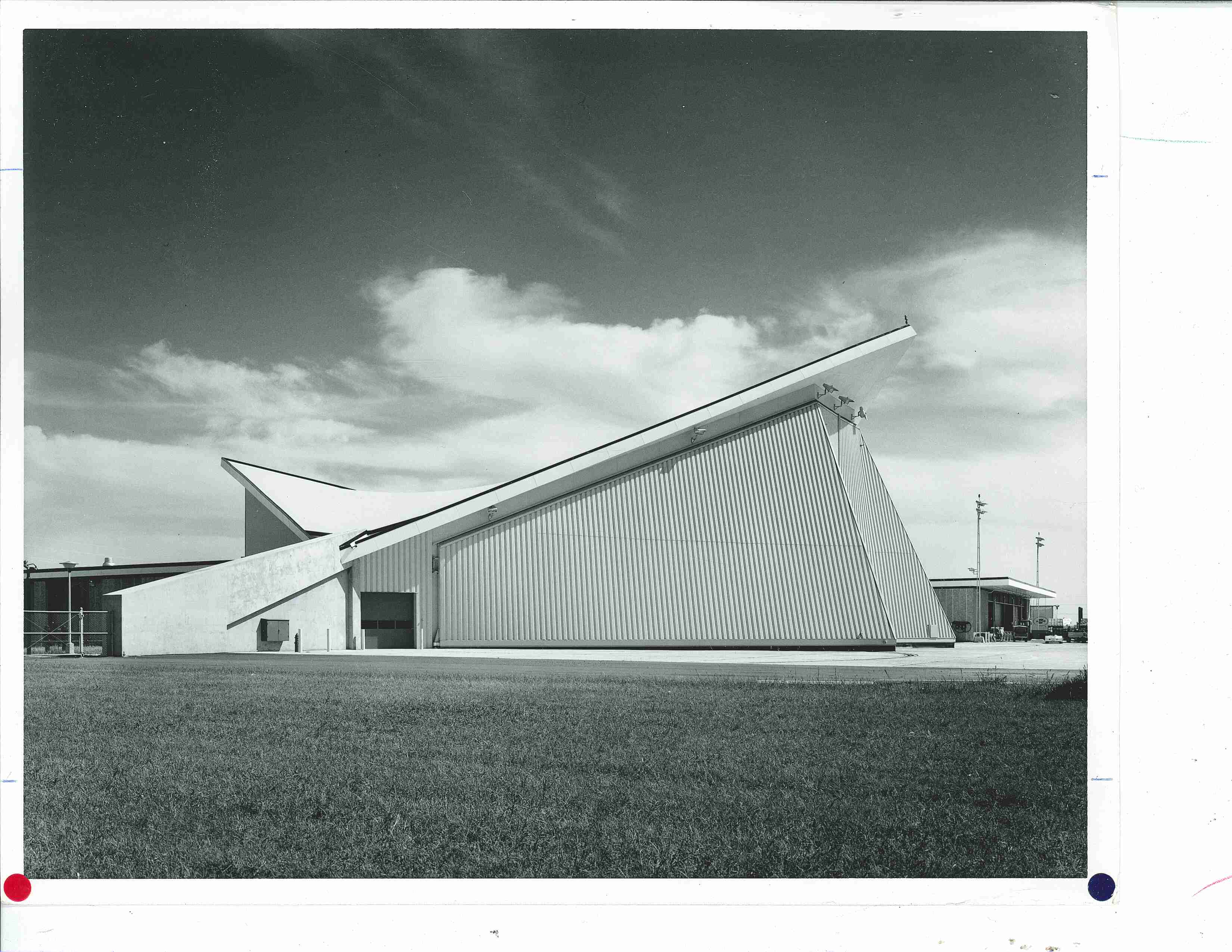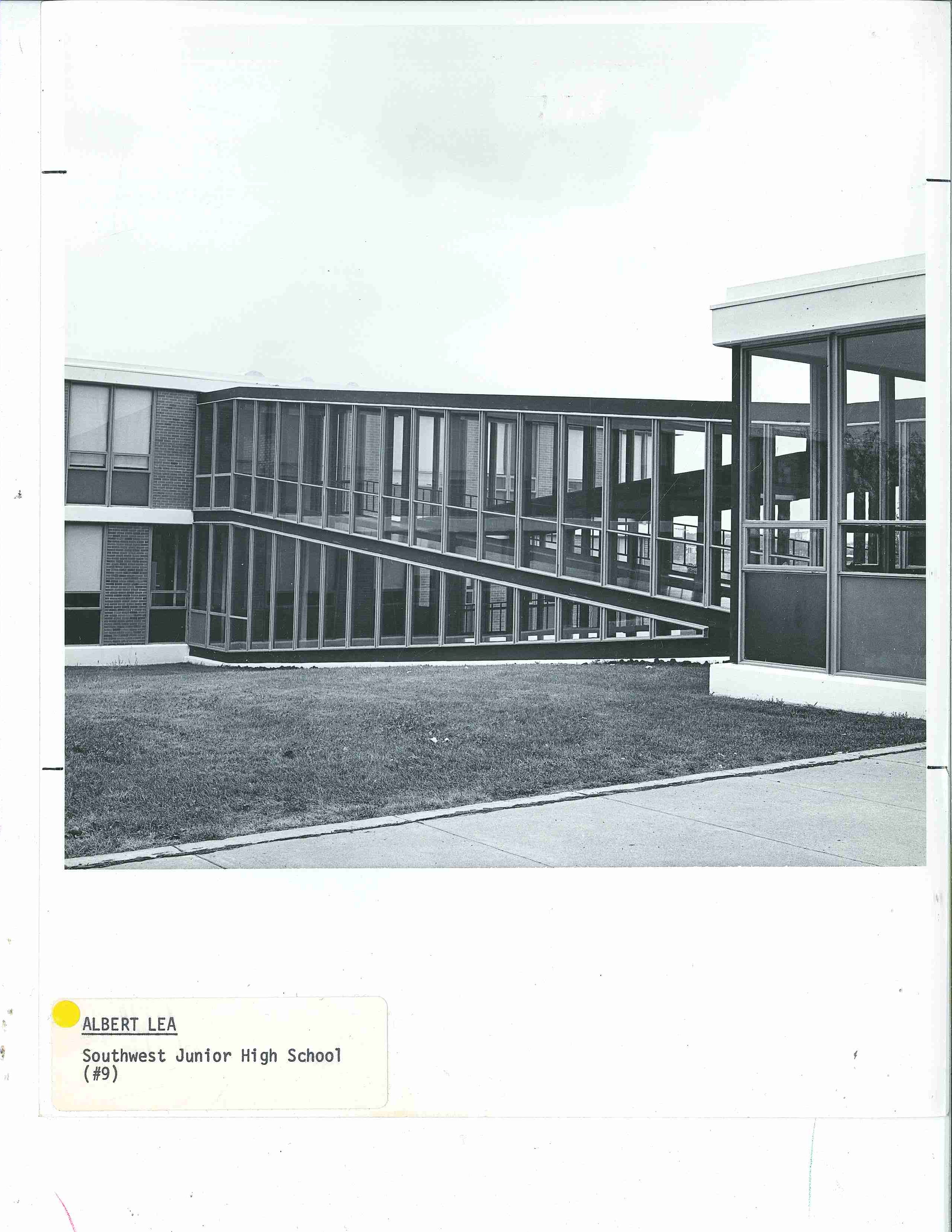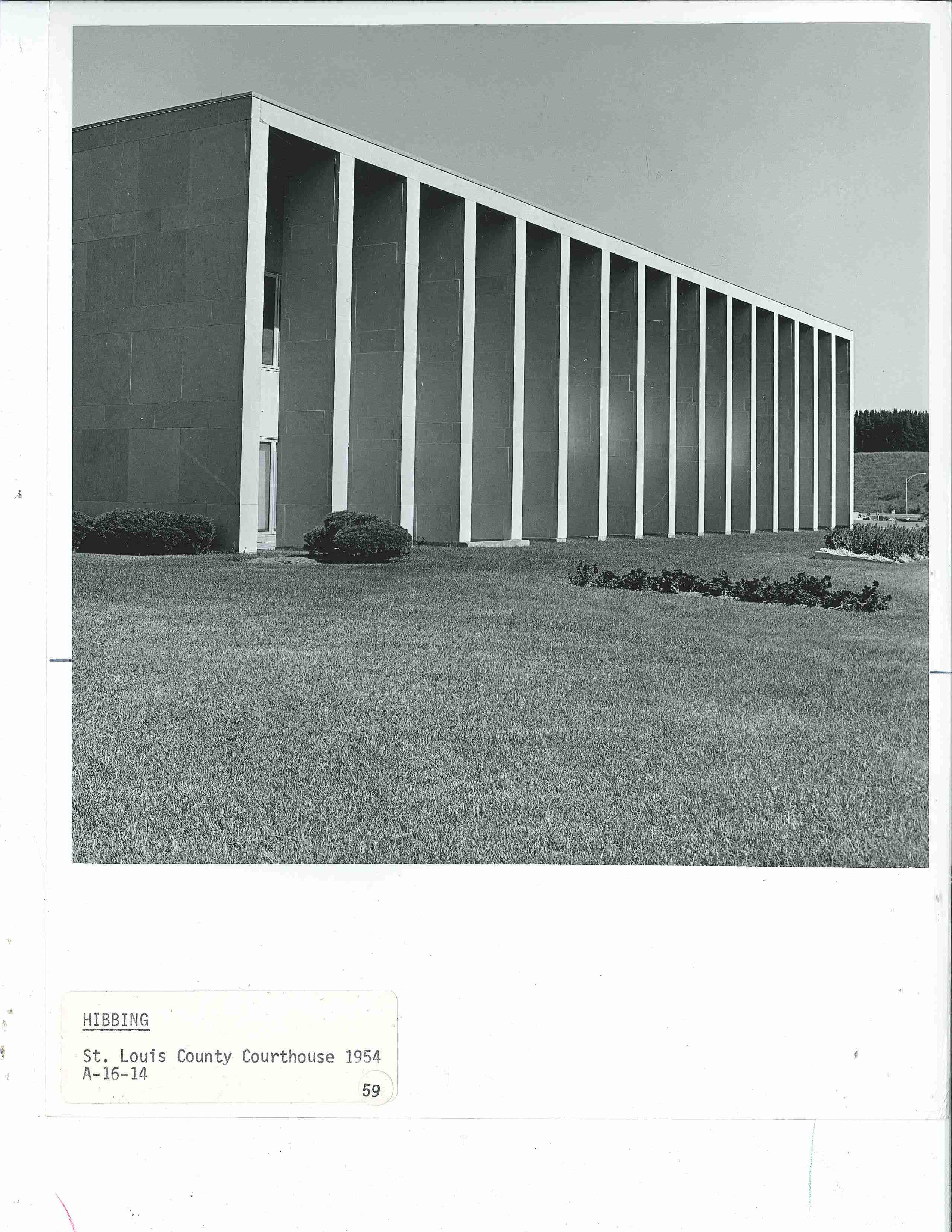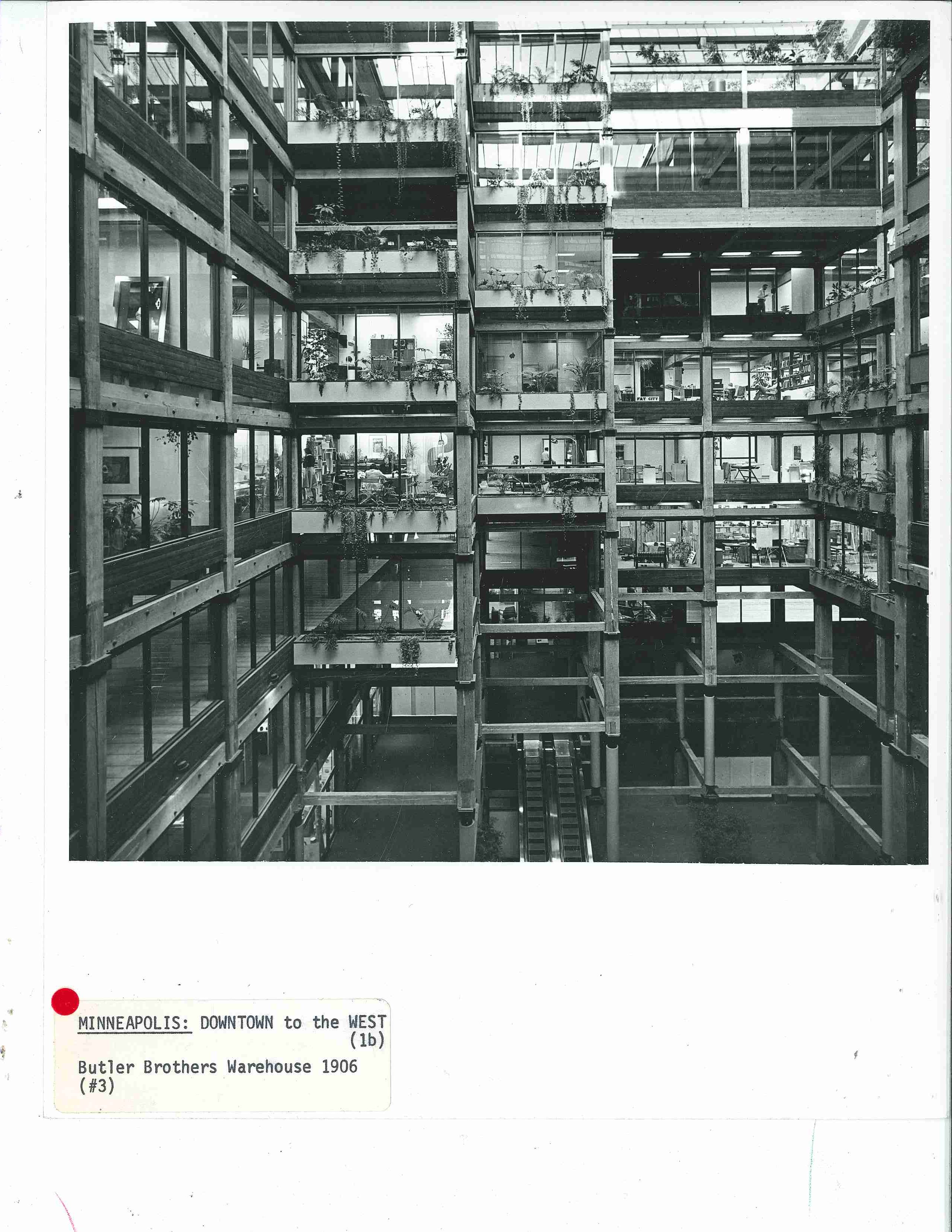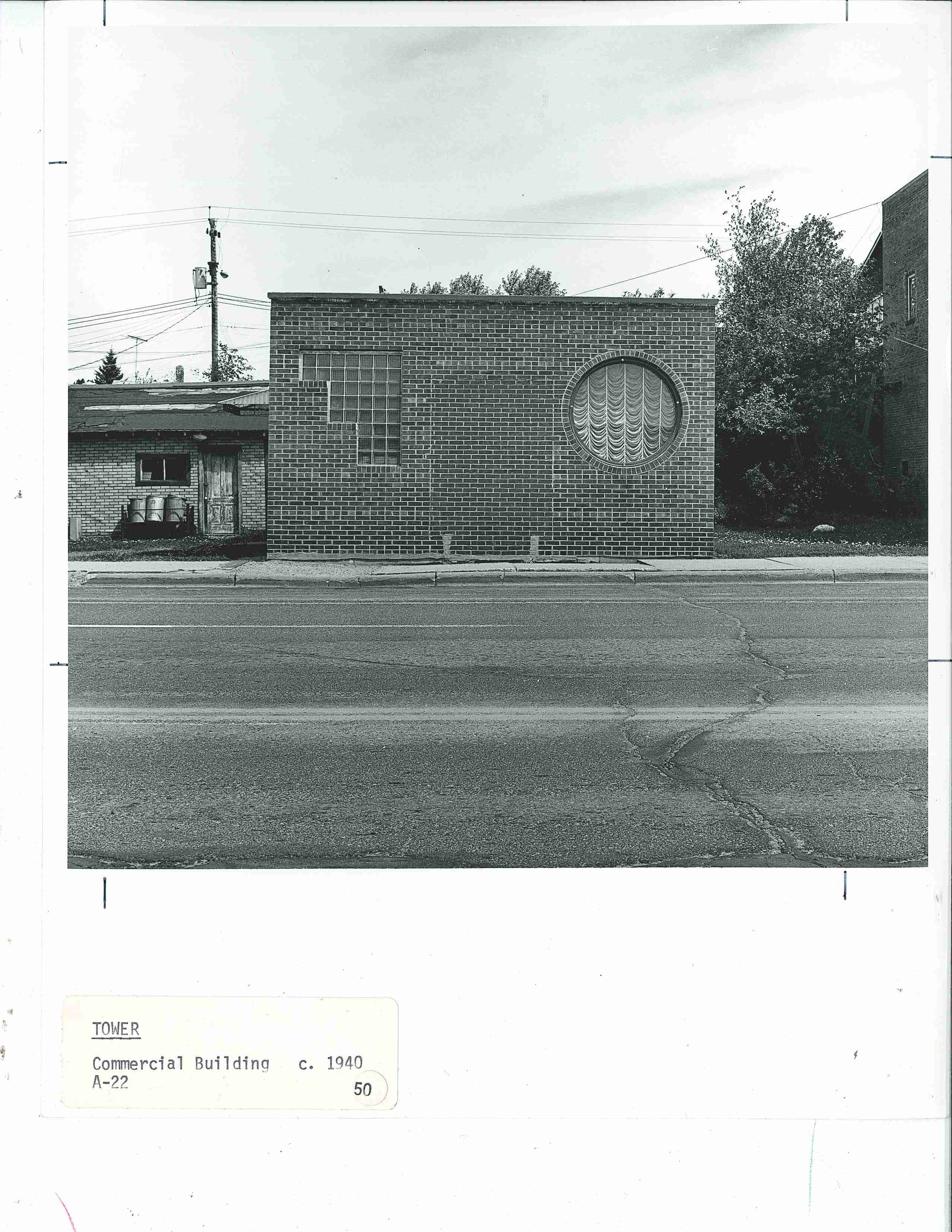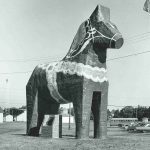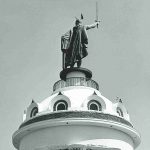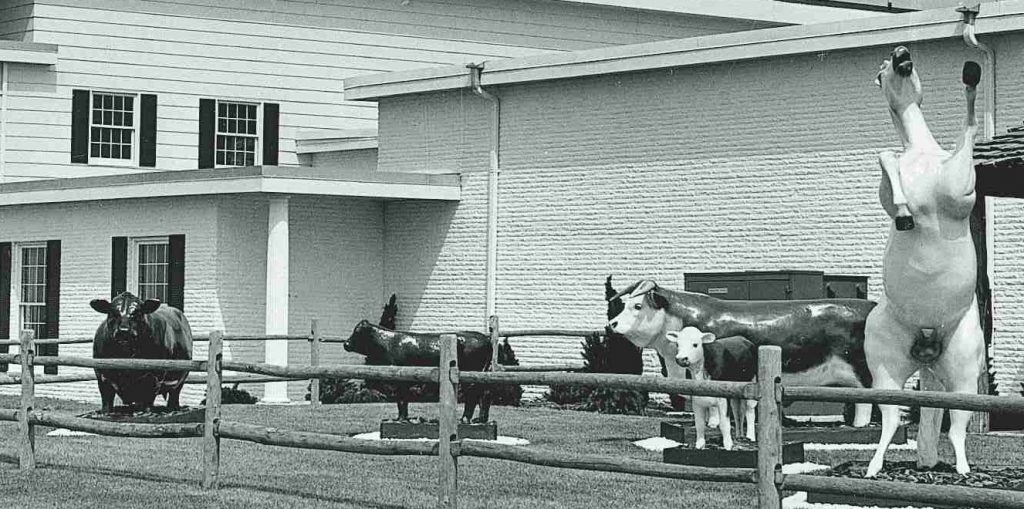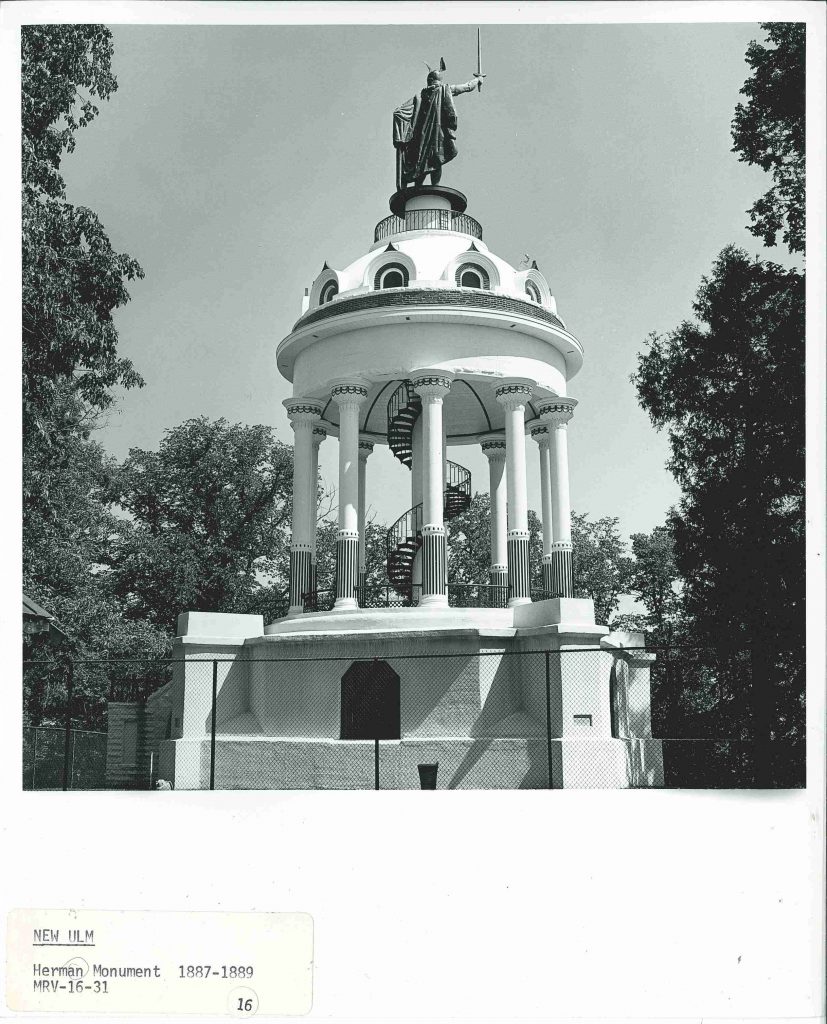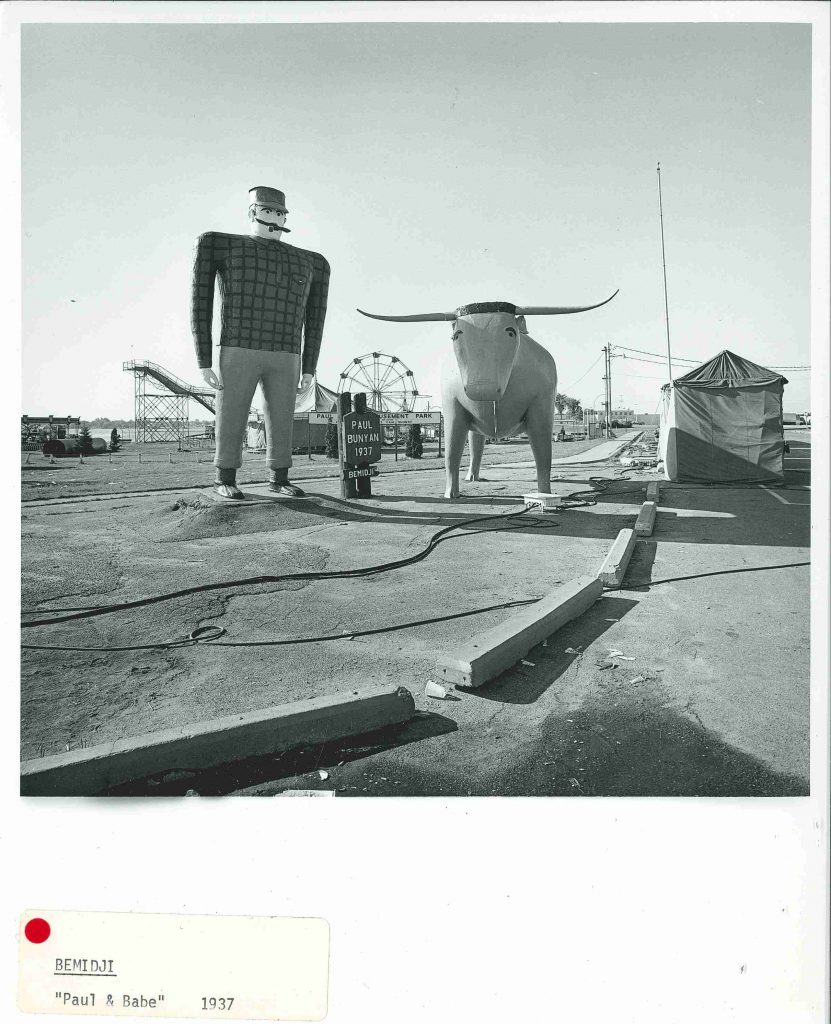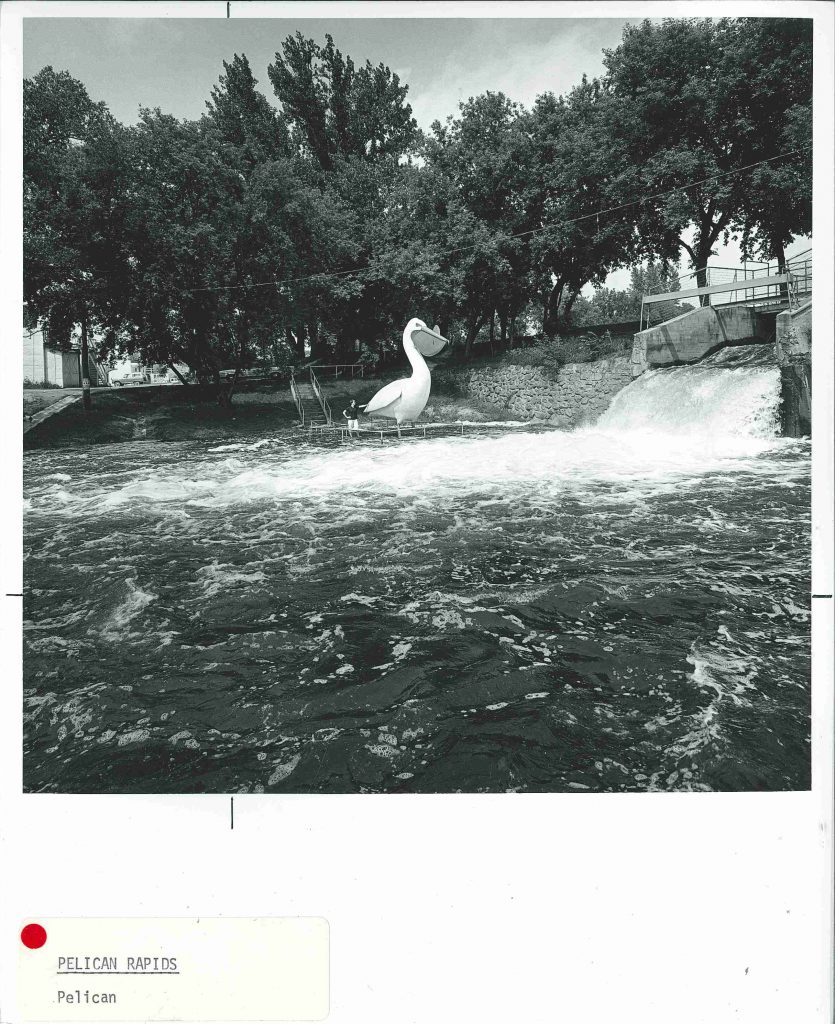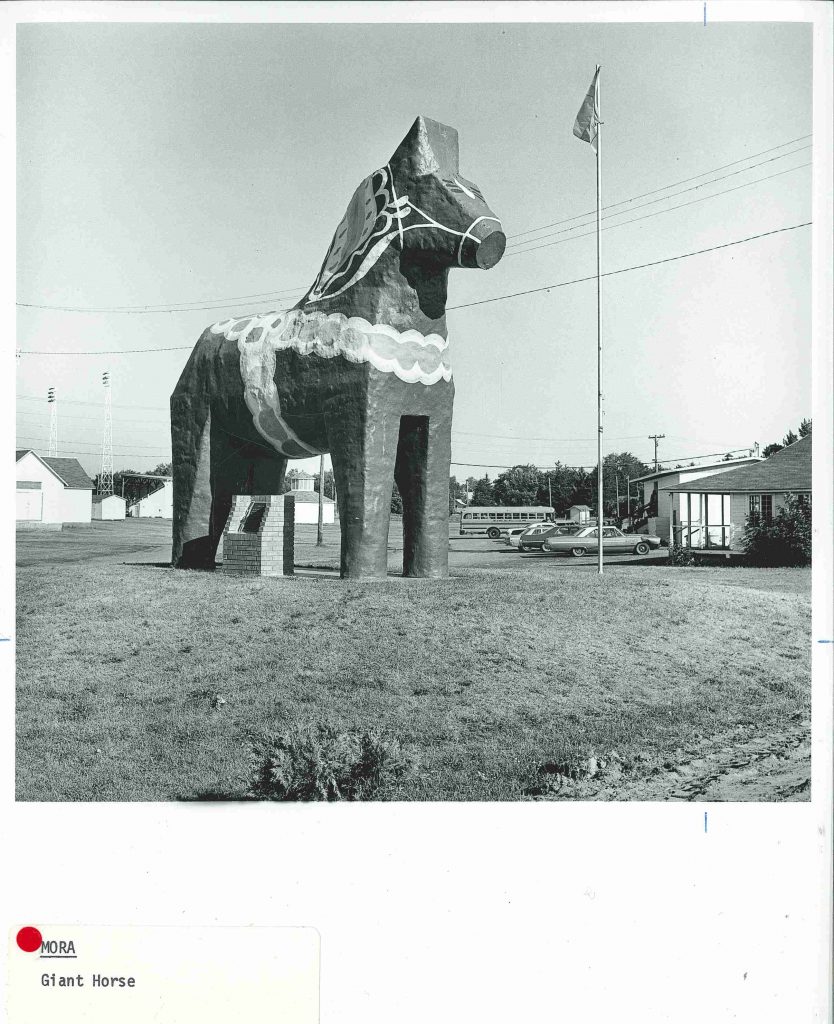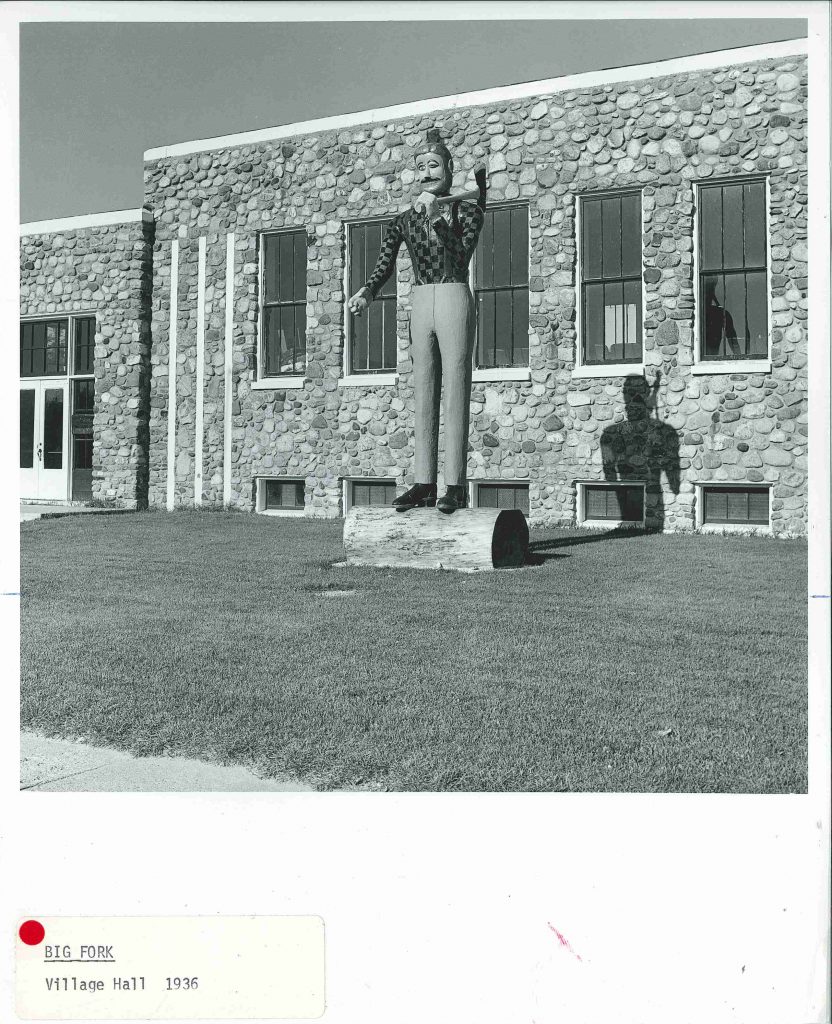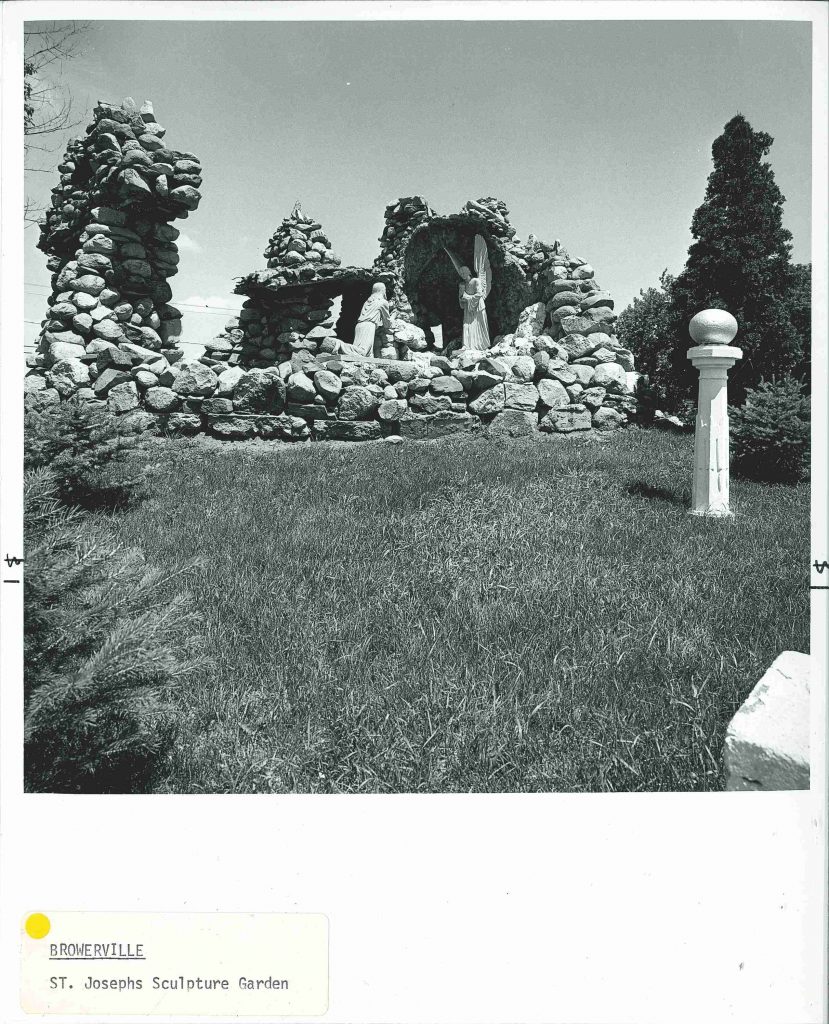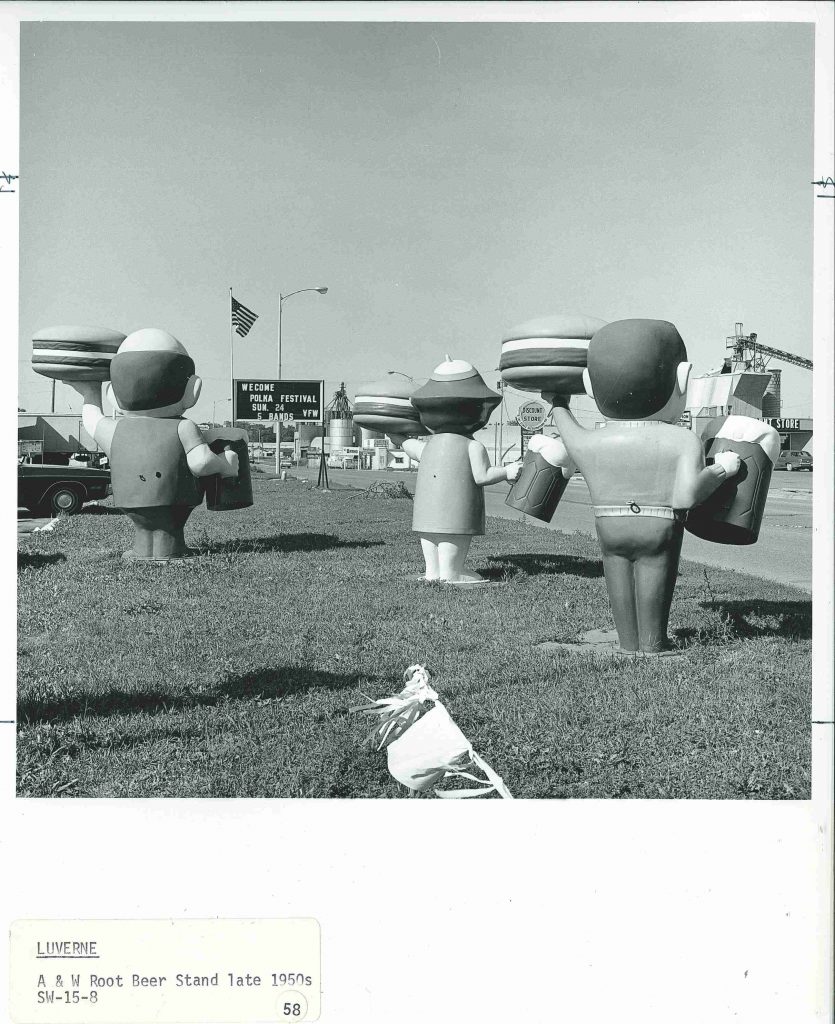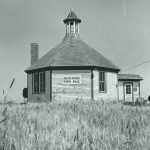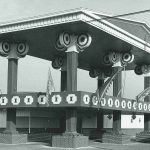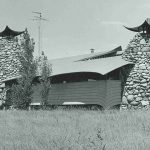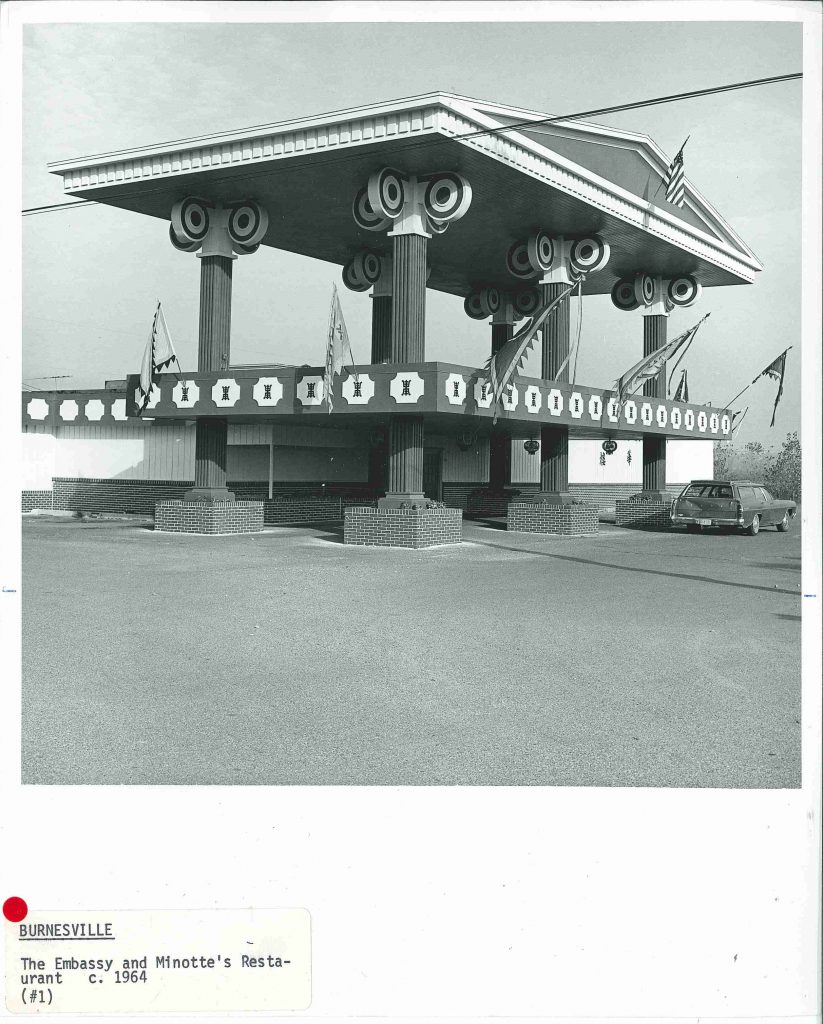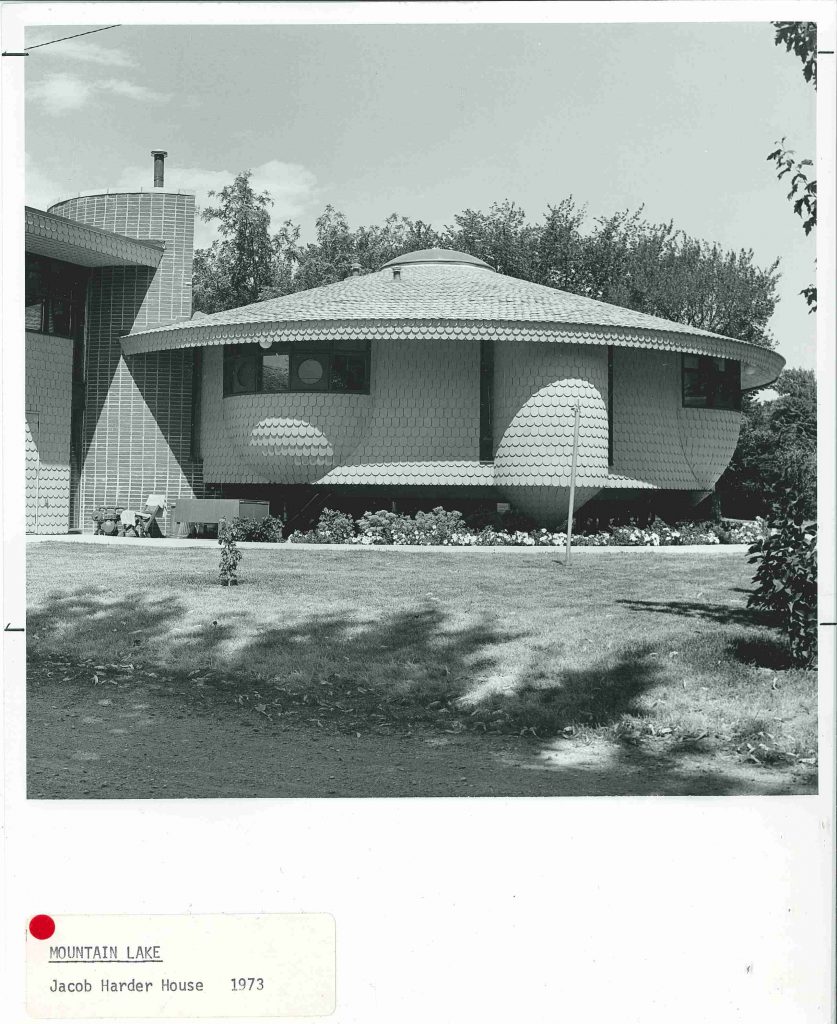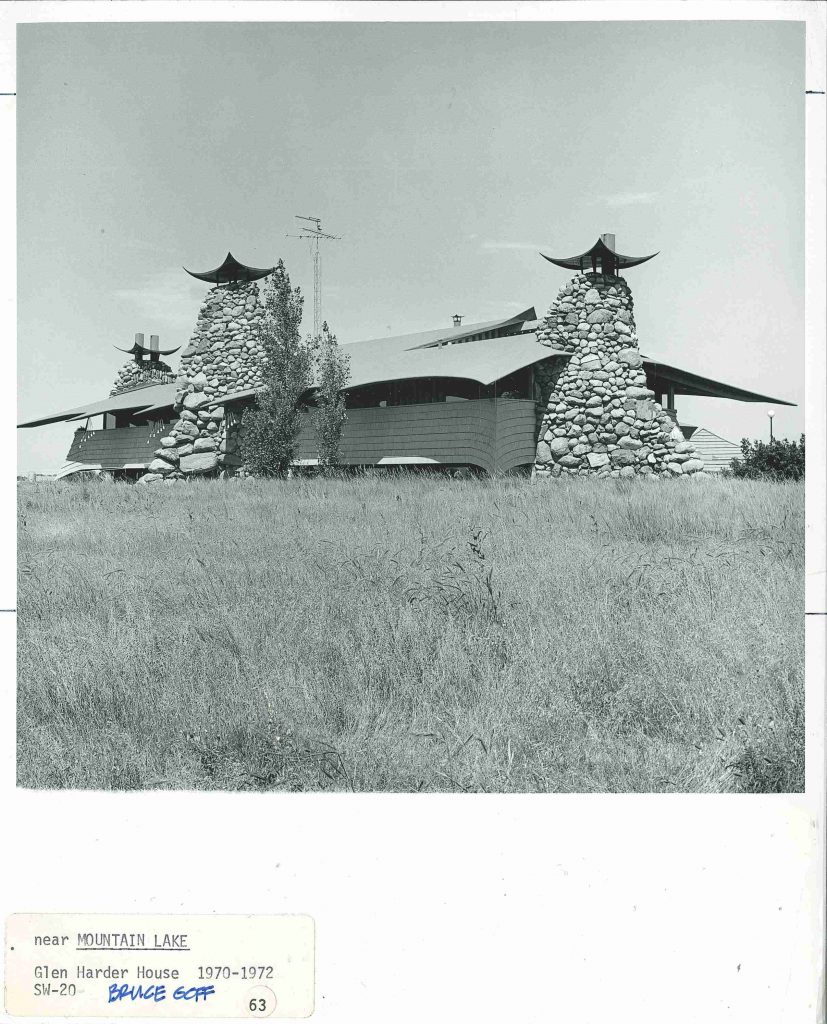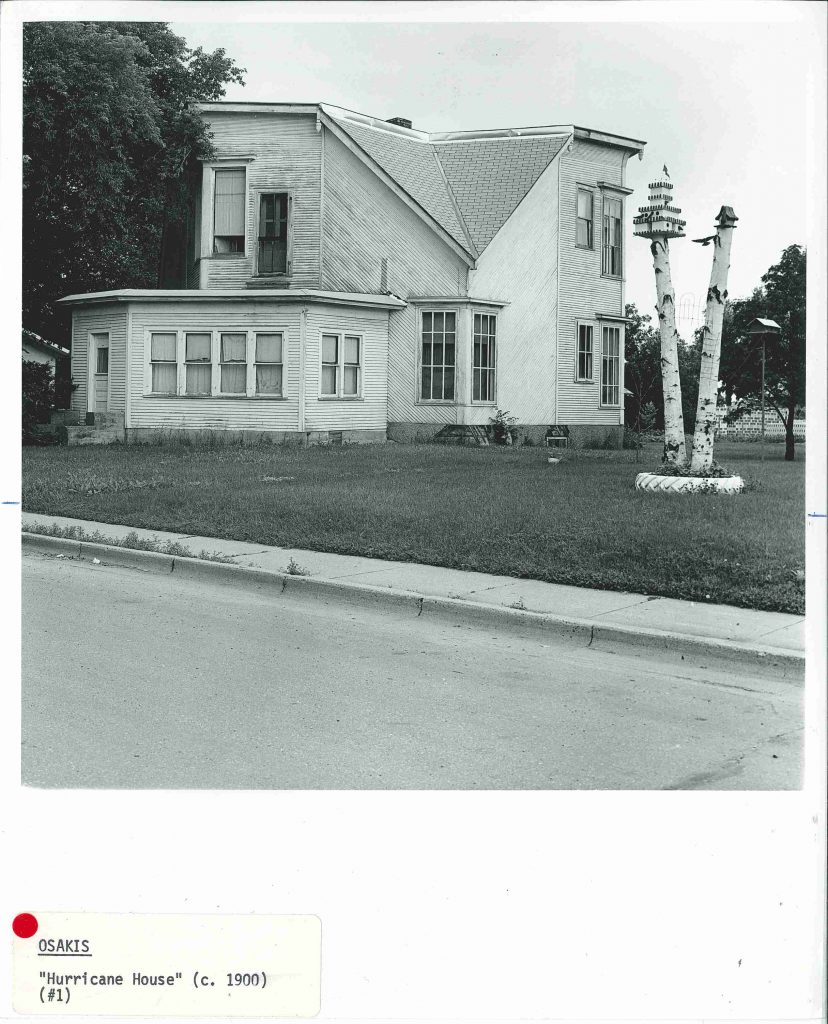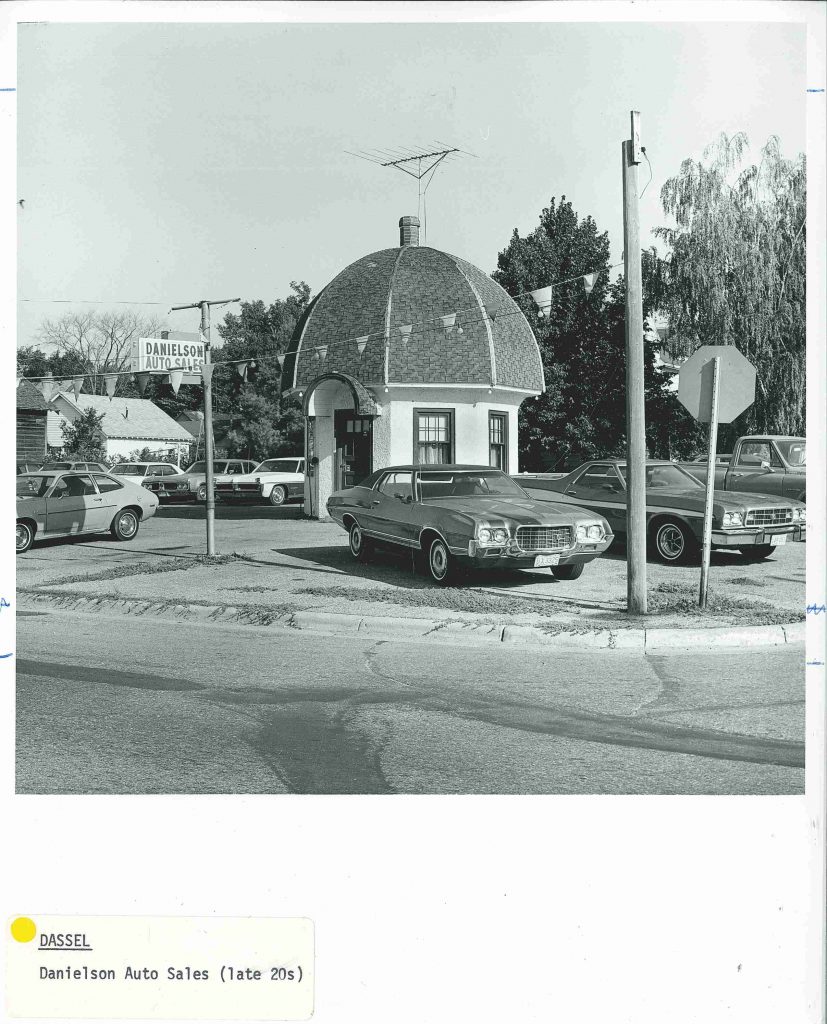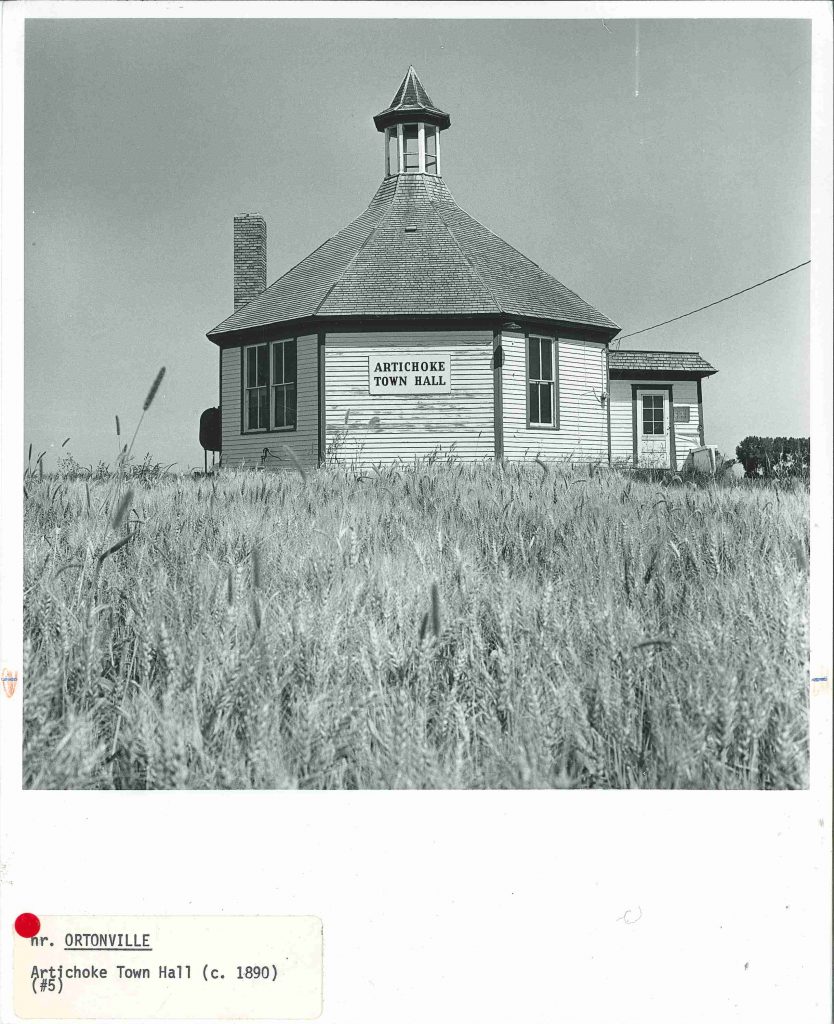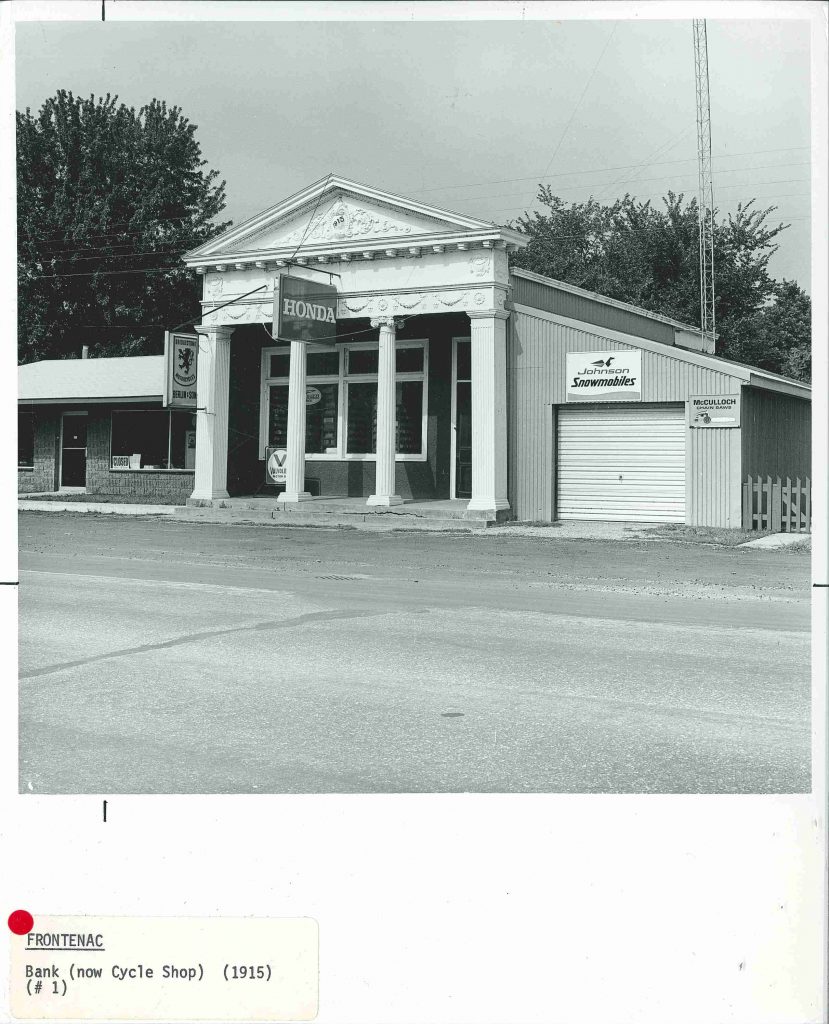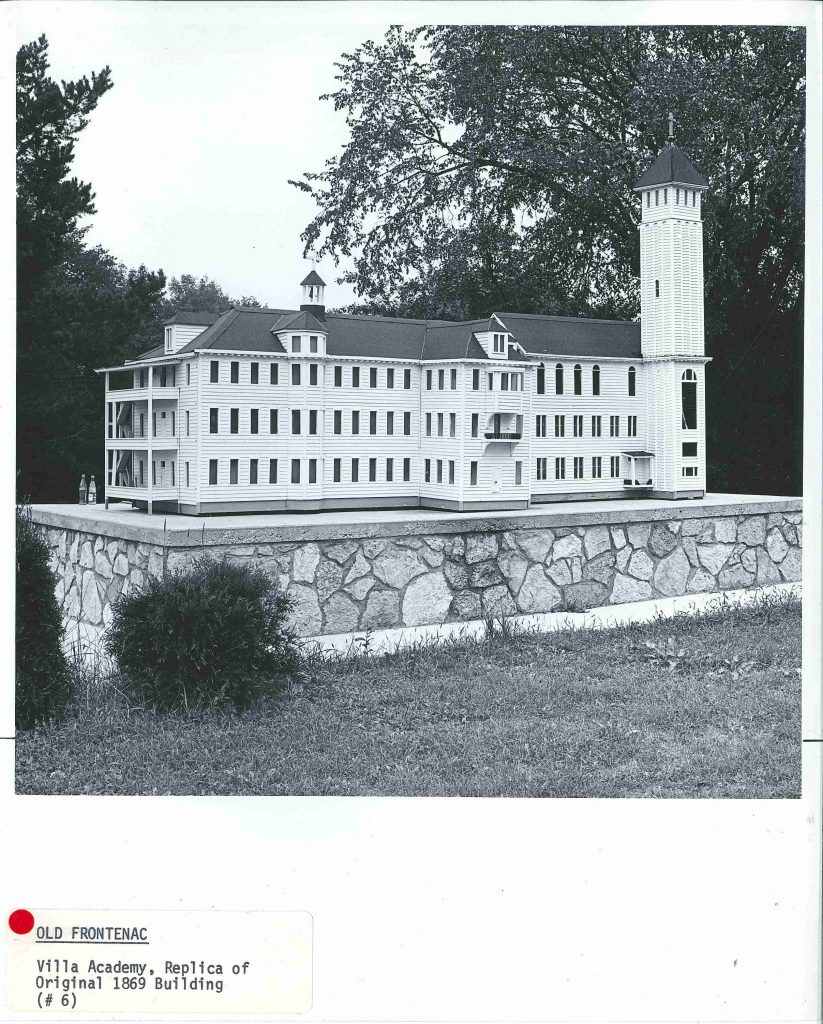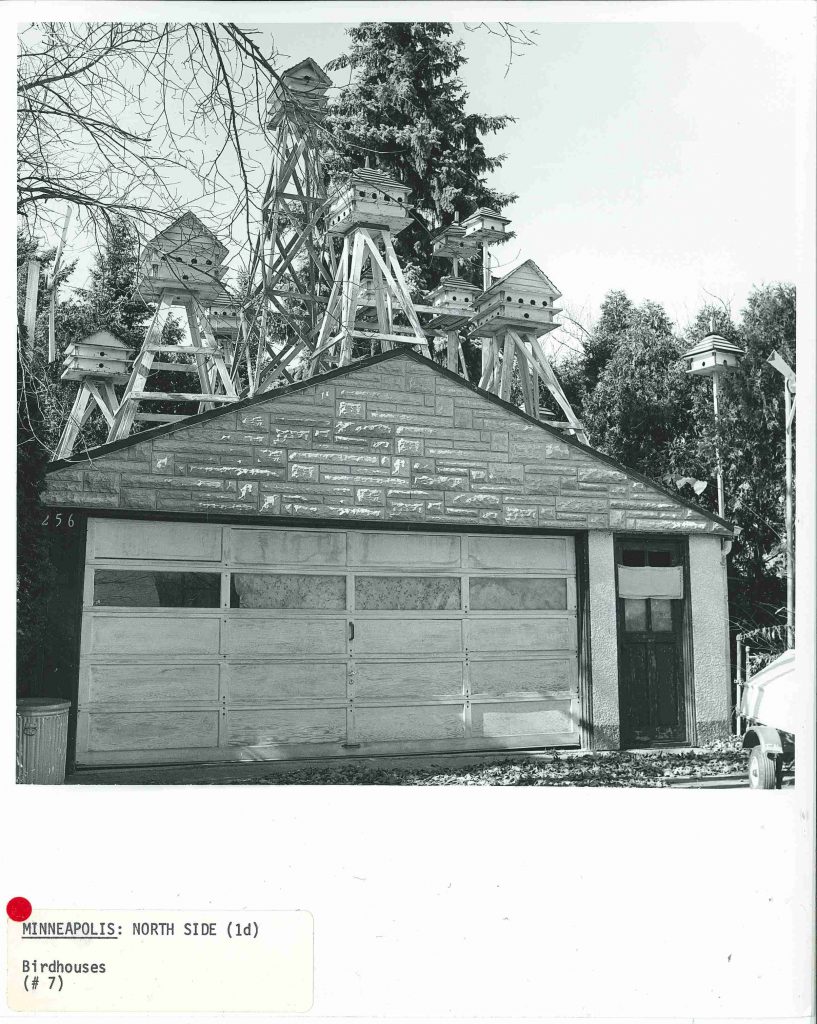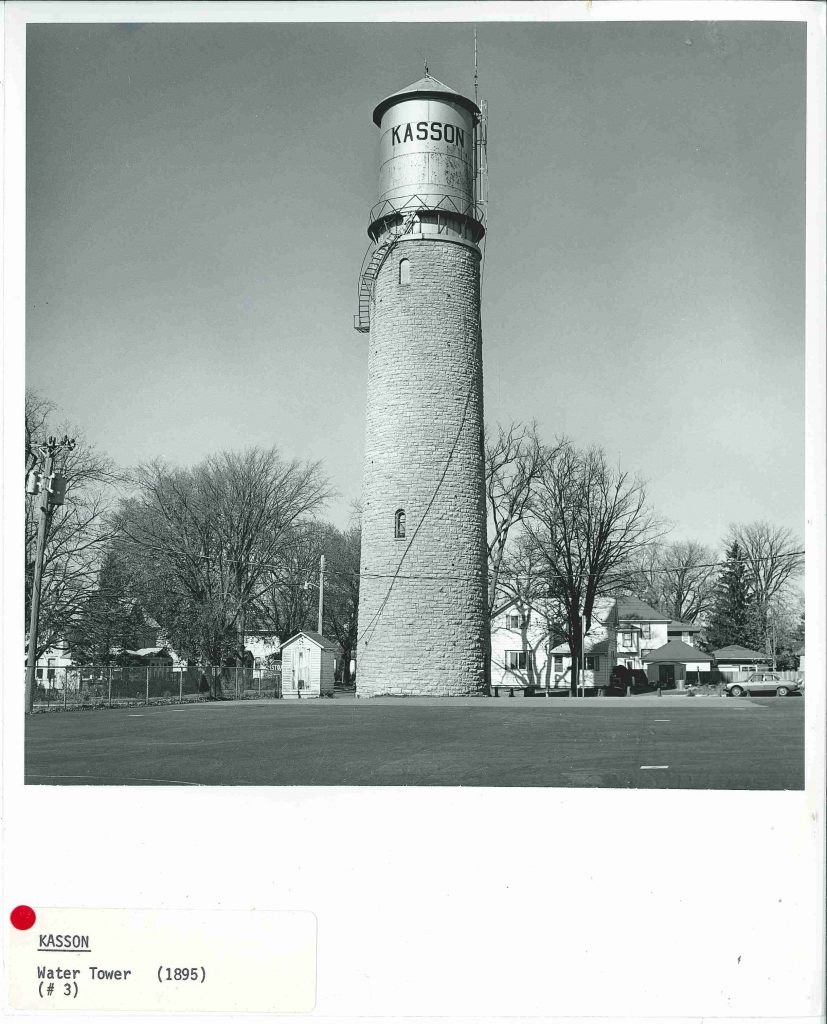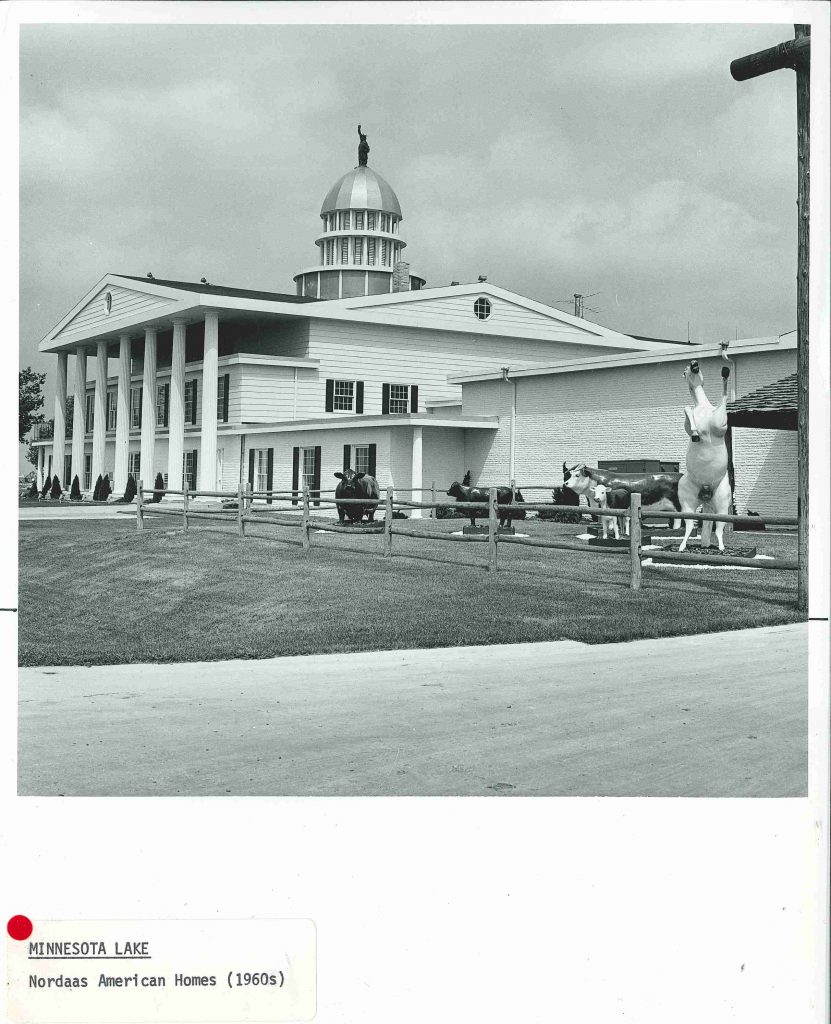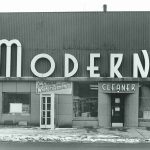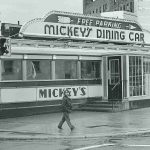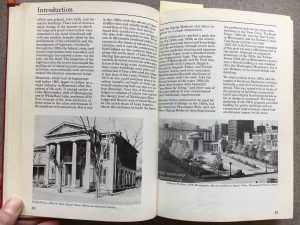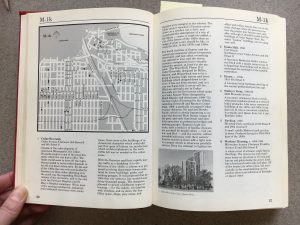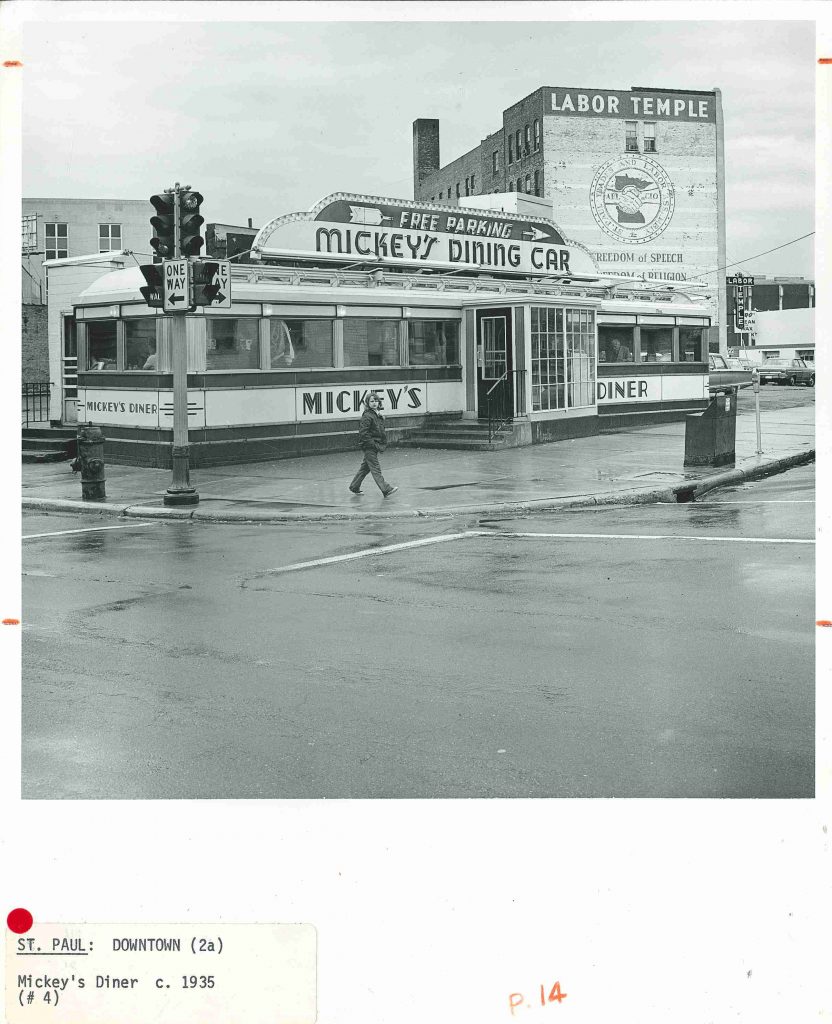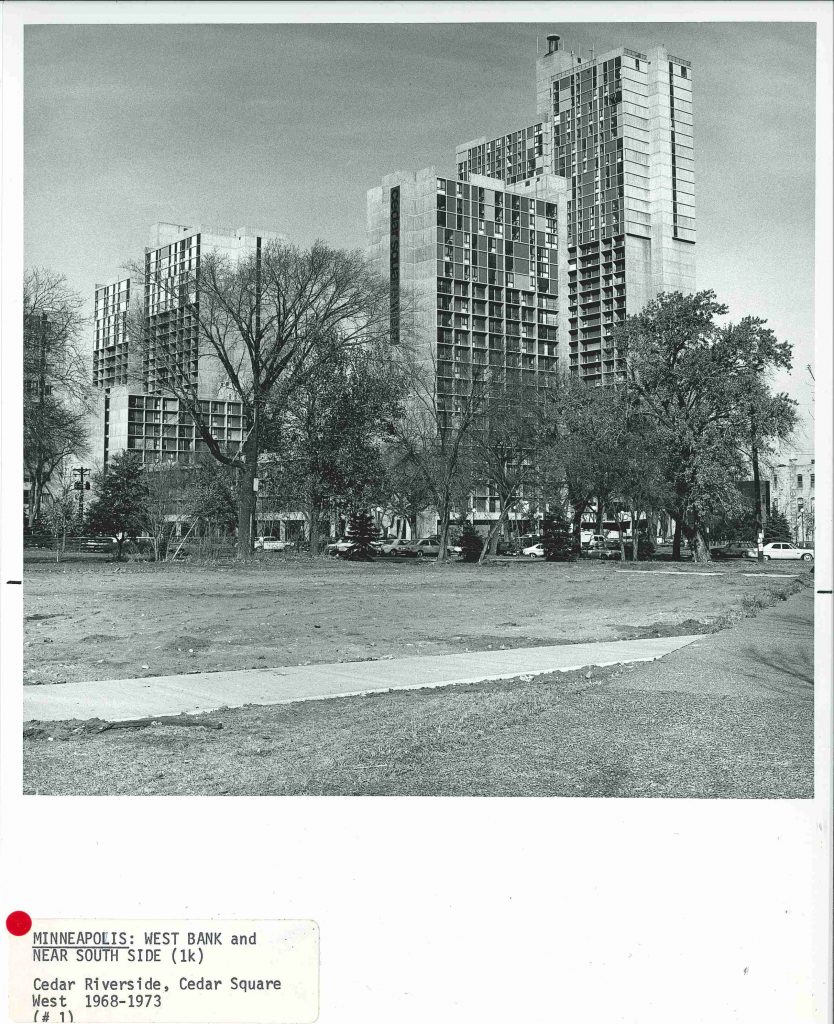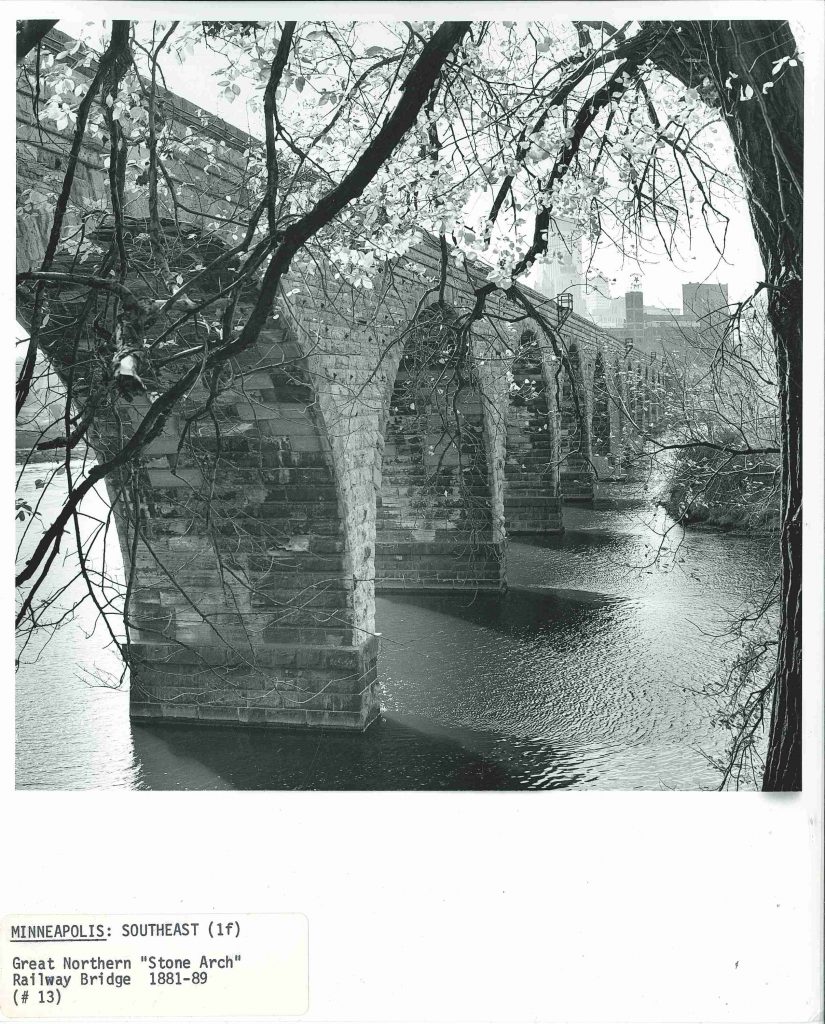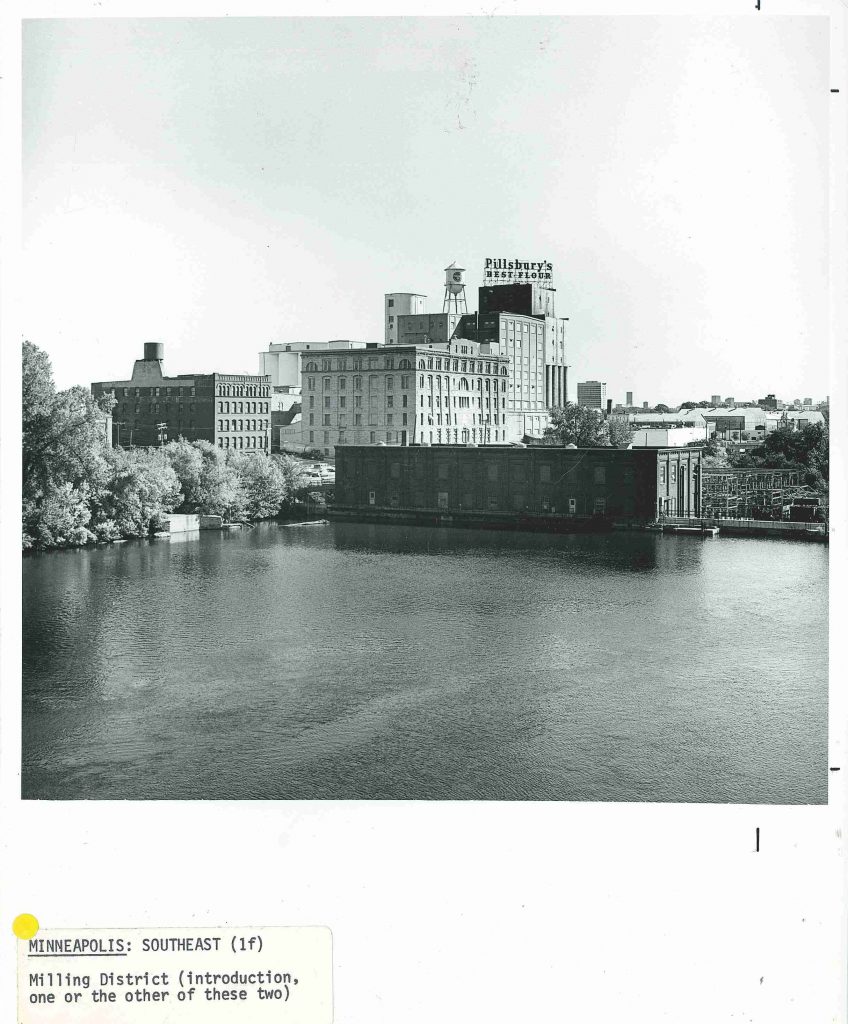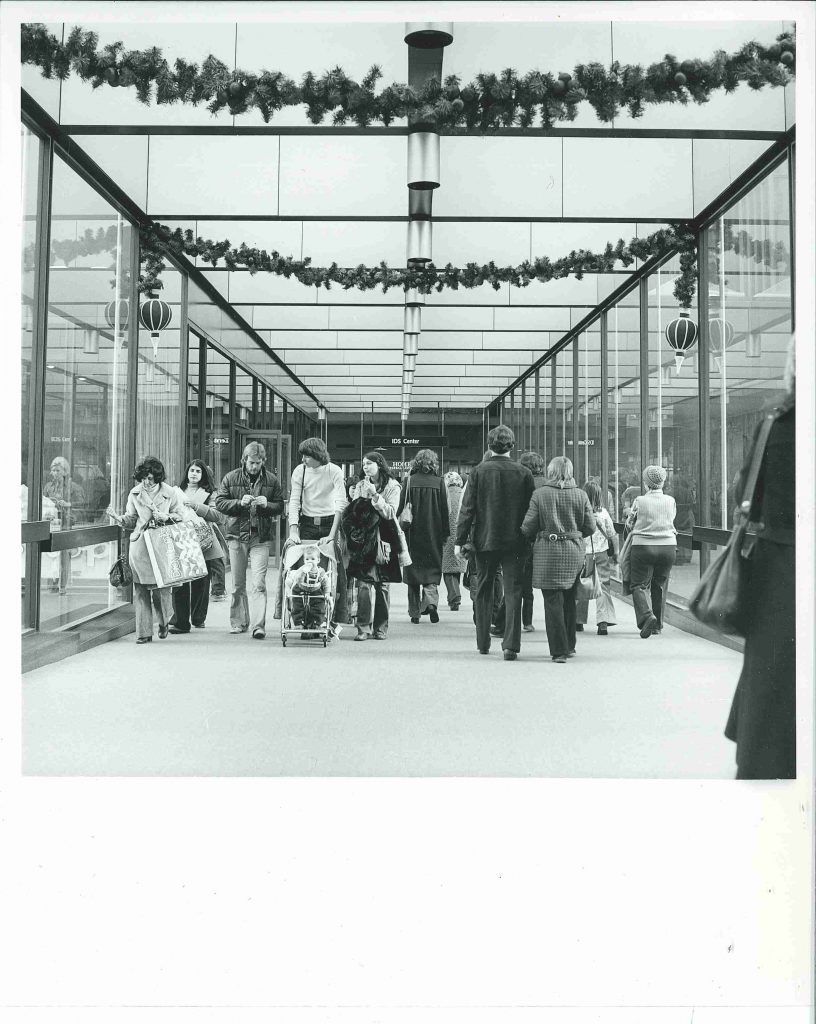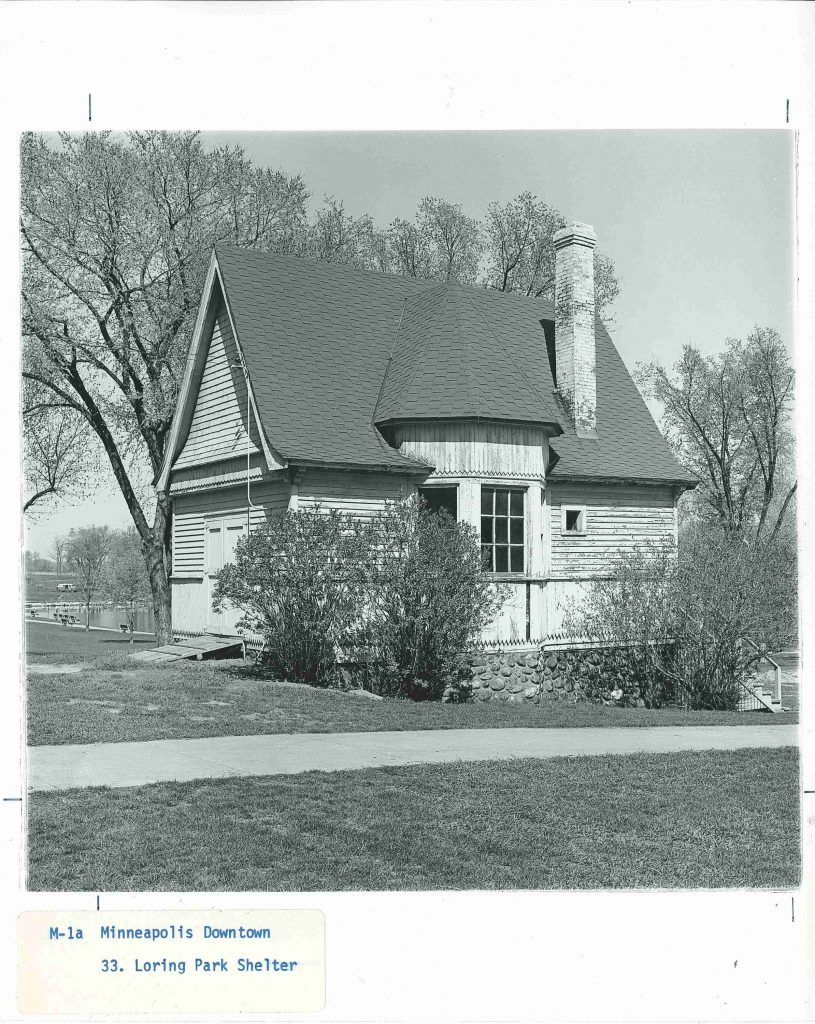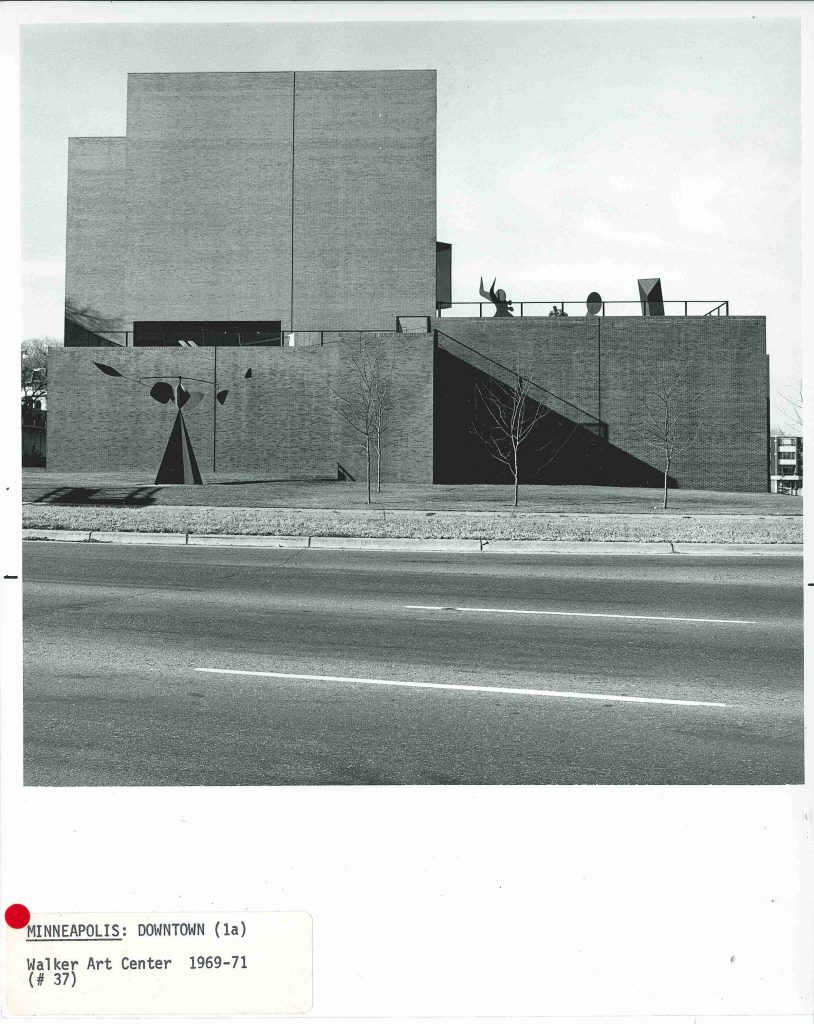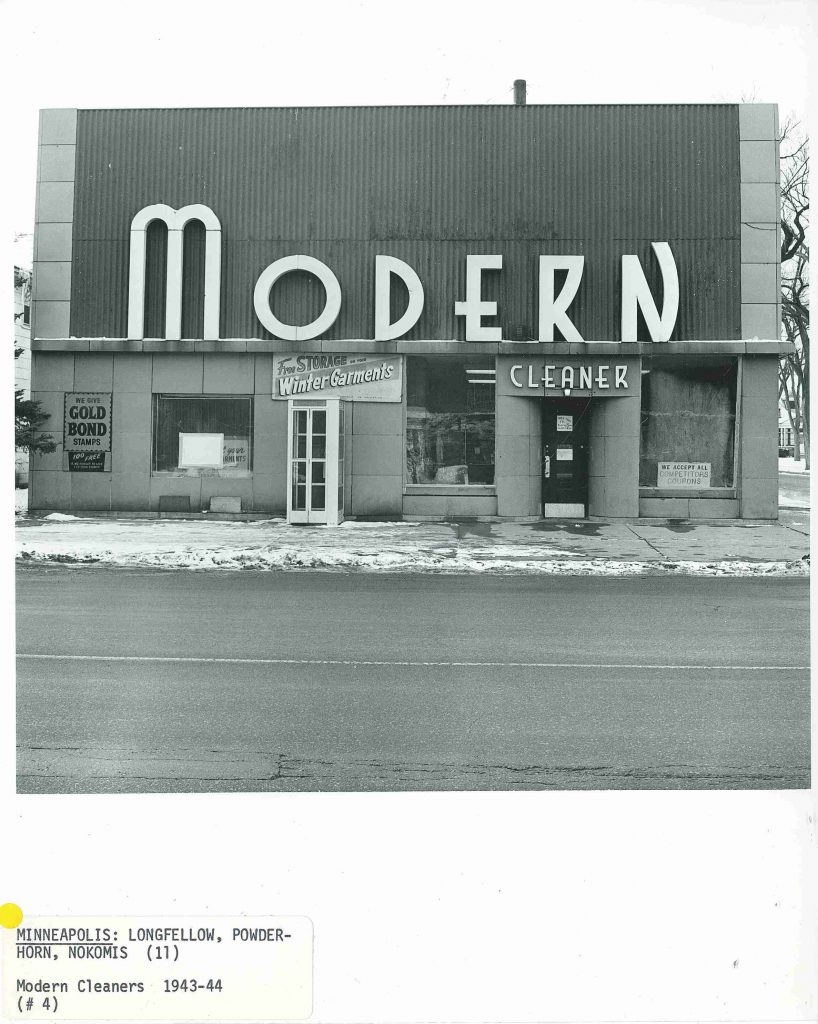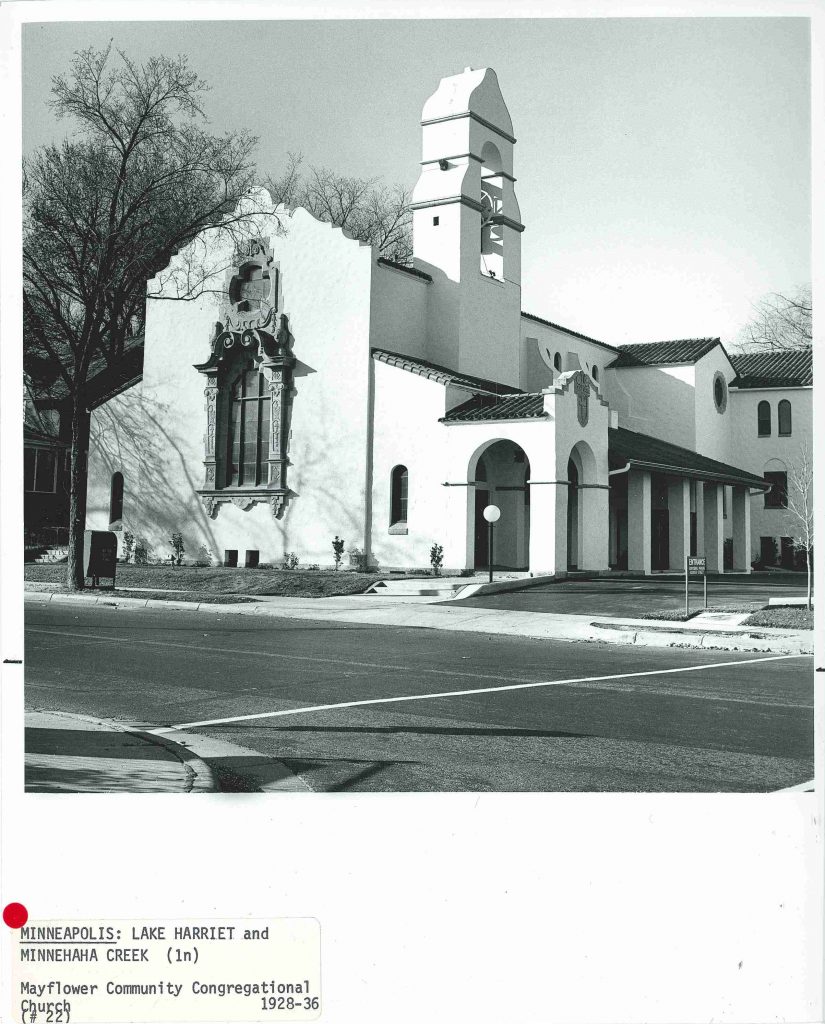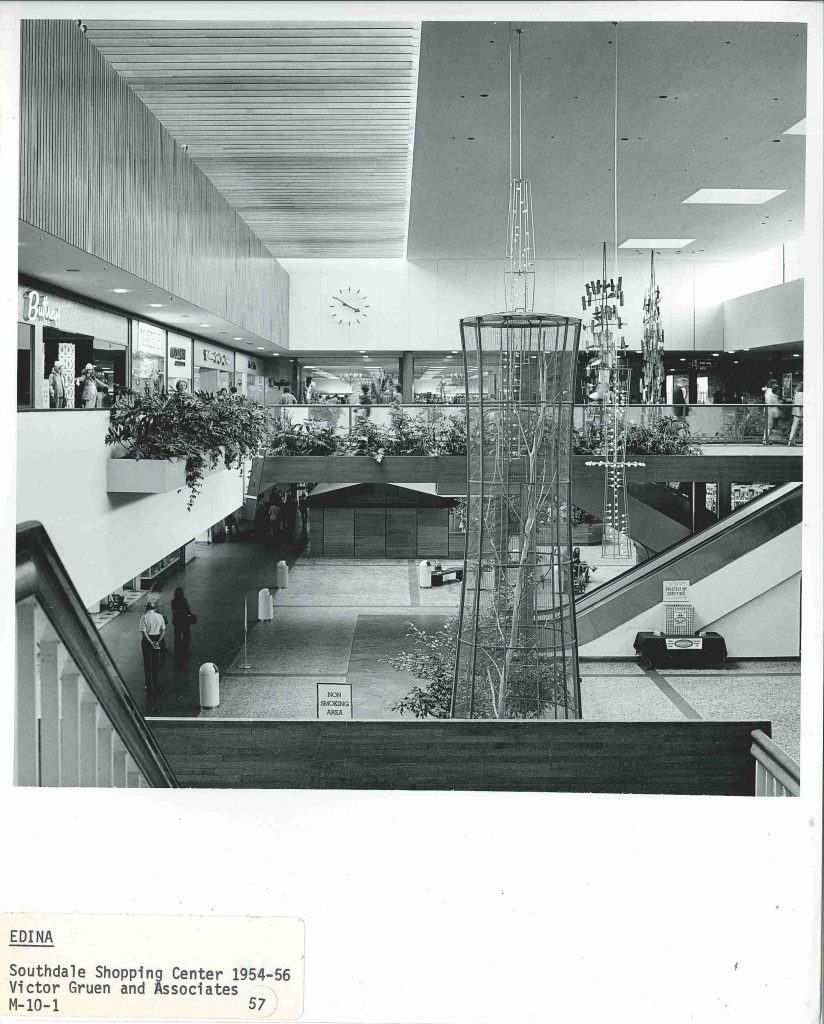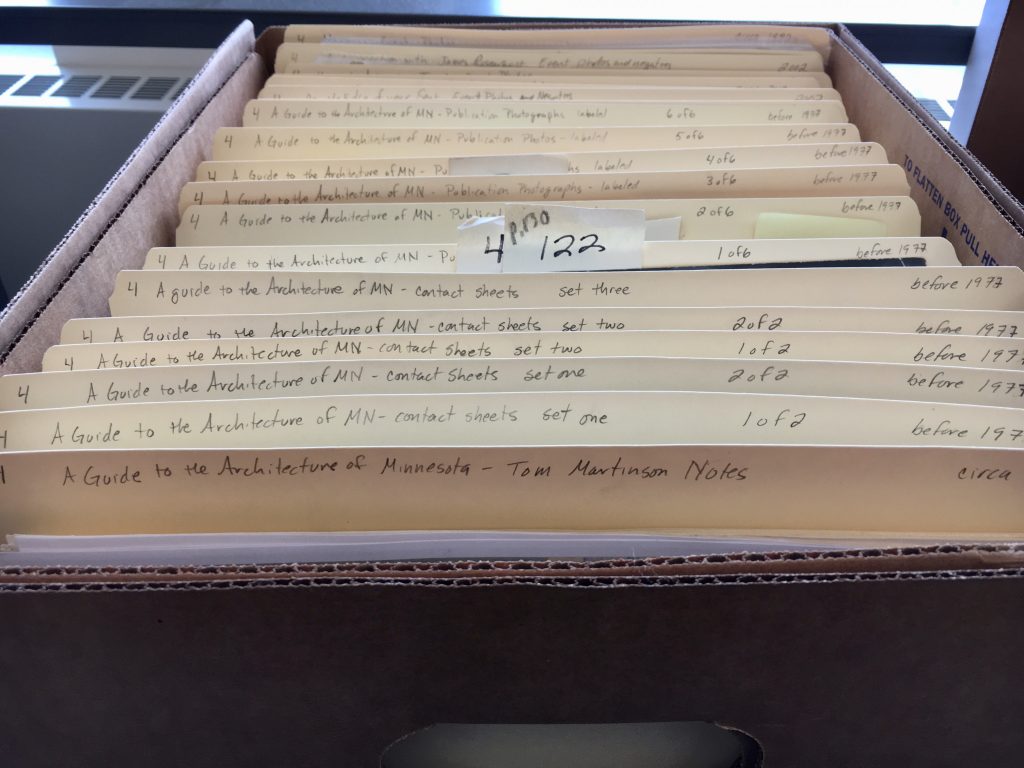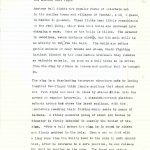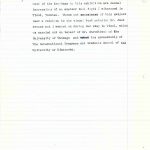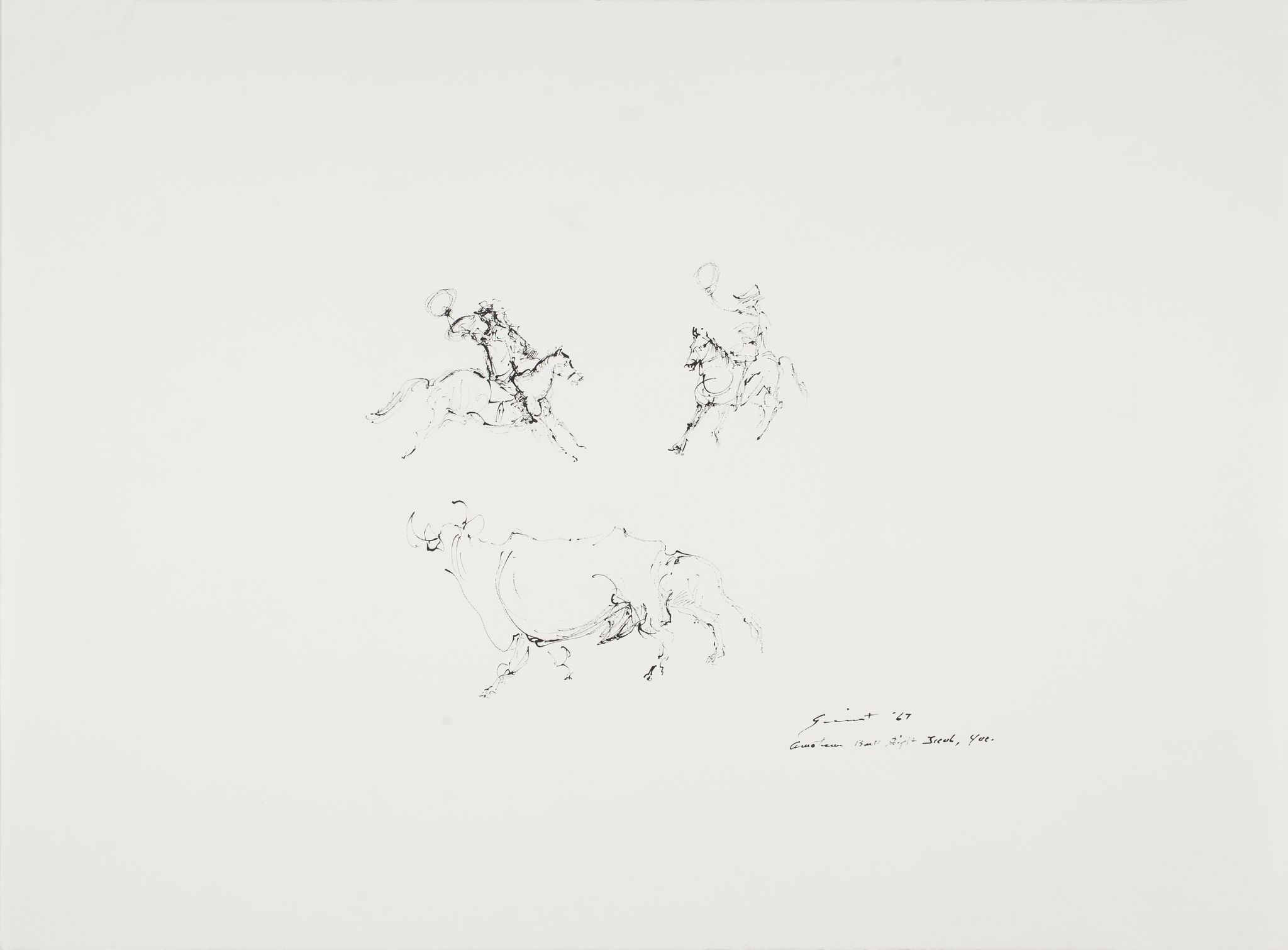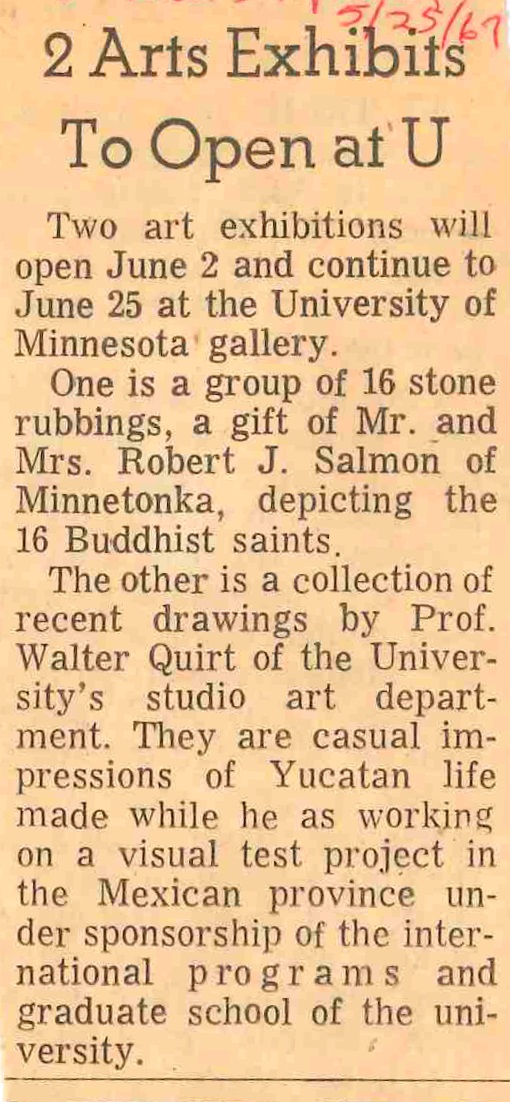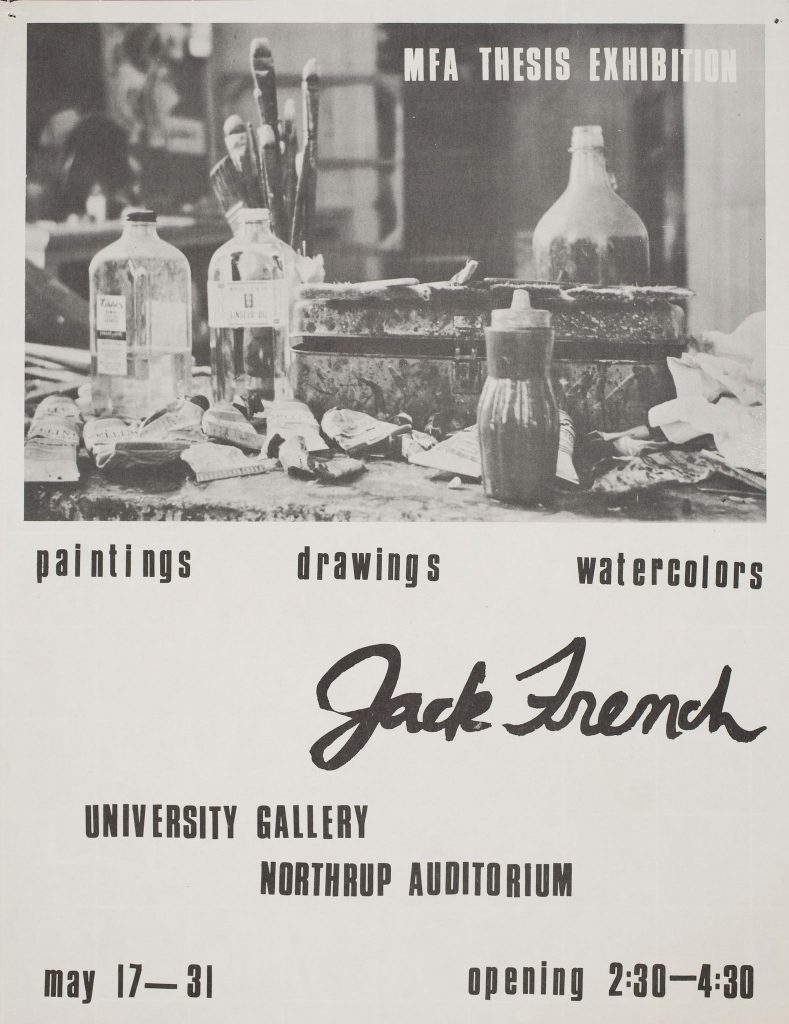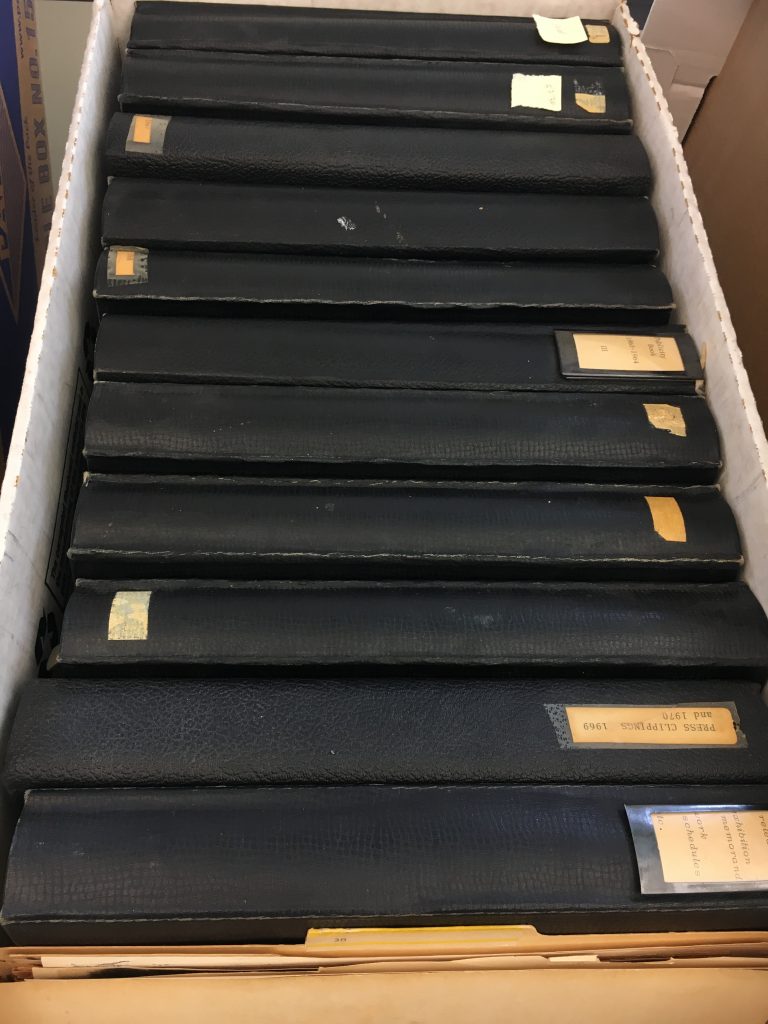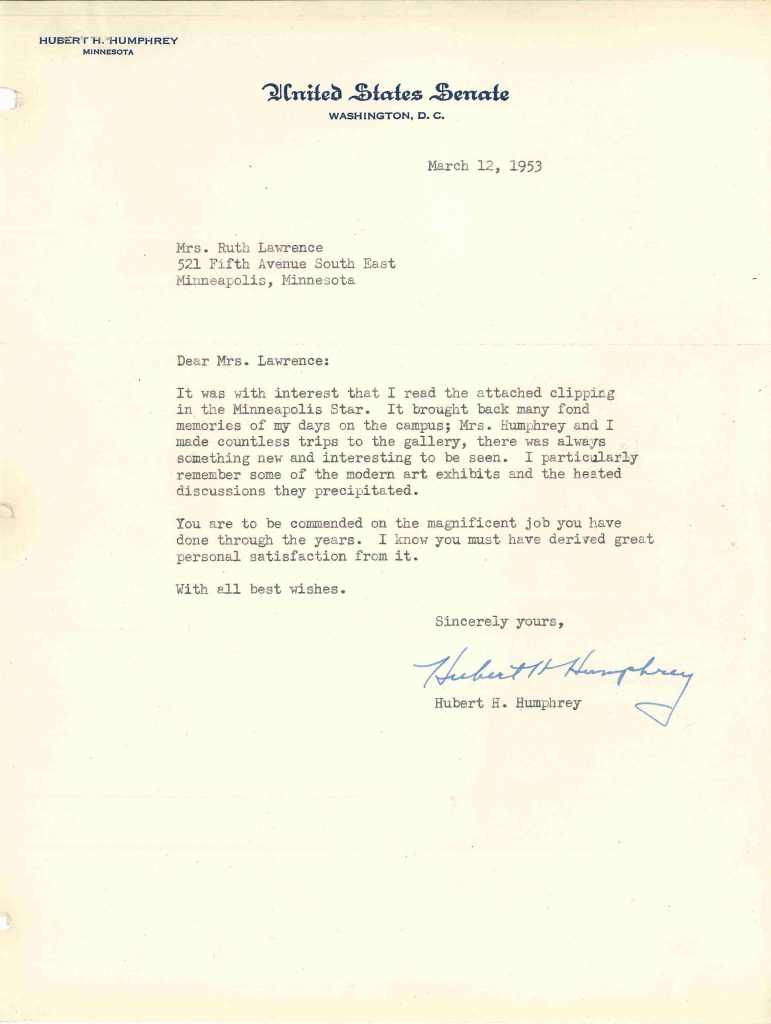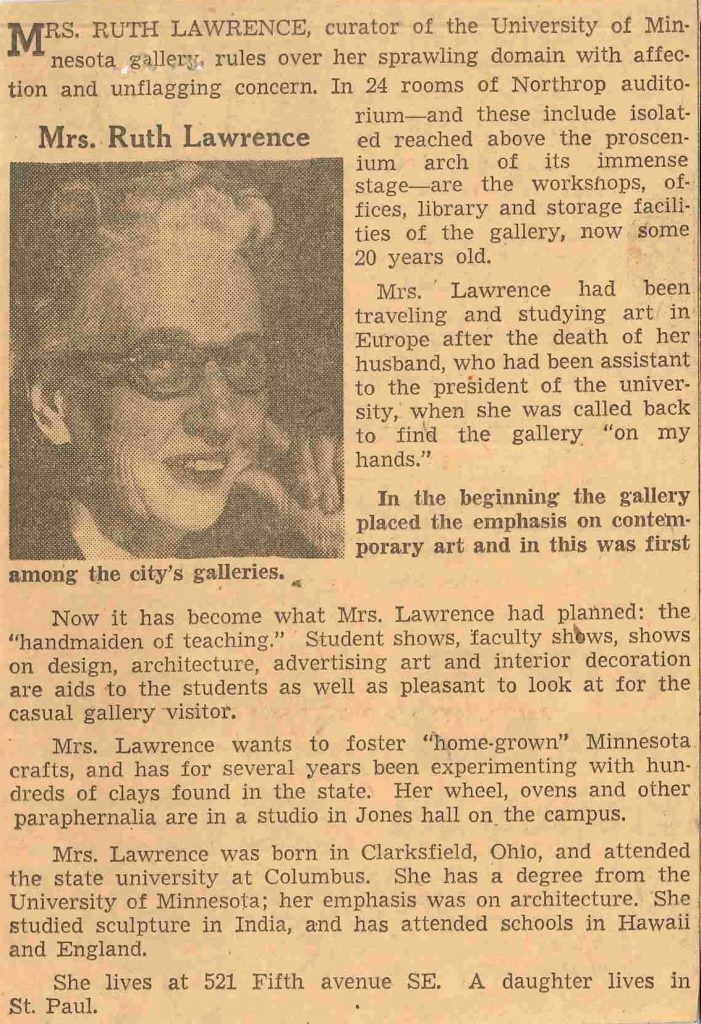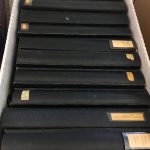
University Gallery Publicity Books
In a University Gallery Publicity Book dated 1968, amidst other article clippings about the gallery is an open letter to the University community from William C. Bernstien M.D., Clinical Professor and Director of Proctology. This item stands out from the rest–first, its a letter rather than an article, its written by a doctor rather than an art critic or art historian and the letter is not directly about the gallery but a student’s artwork. This unusual letter is an introduction to the the twisting tale of an ill-fated painting titled No. 85.
The letter begins:
“Have you heard about the “happening” at the University Hospital and do you know what has caused the “stir” in the lobby of Mayo? Here’s what it is all about! Quite by accident a large color painting by Ron Brodigan was selected for exhibit in the hospital lobby and the reaction to its presence there has been an exciting one.”
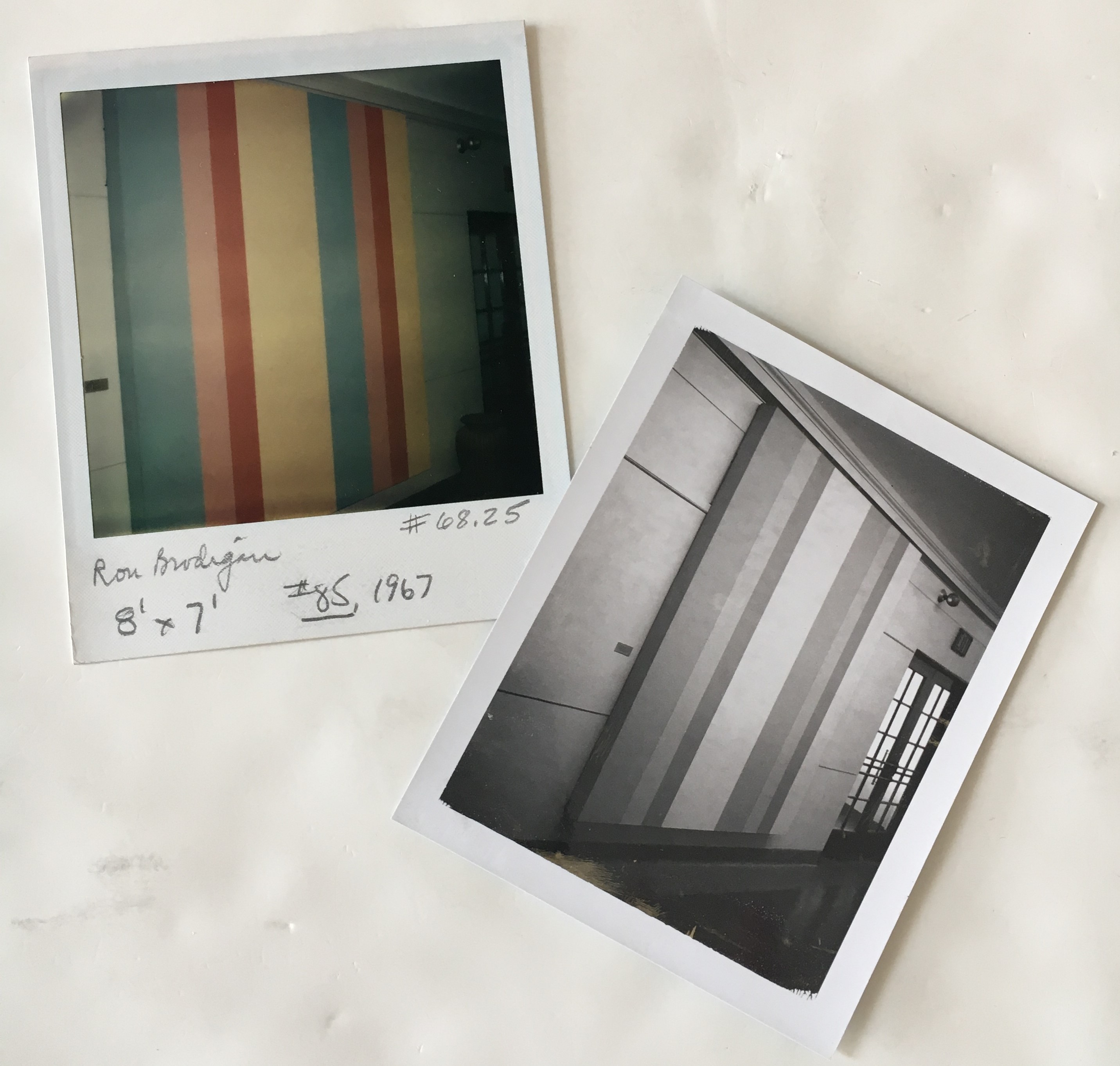
Polaroid pictures circa 1968 of Brodigan’s painting titled No. 85 upon installation in the University hospital lobby. Courtesy Weisman Art Museum registrar’s accession files.
Intriguing beginning, right? Digging a little deeper into the publicity book, another article surfaces revealing a related and opportune moment in time: a University alum needs to find a new home for his enormous paintings offering them to the gallery; the University Gallery, already with too little storage space, would normally have to decline the student’s donation but a perfectly timed request from the U hospital for artwork saves the day. This painting appears to begin an initiative to display works from the art collection in public spaces around the campus–a practice which continues today. The stars seemed to align for Ron Brodigan’s painting back in 1968… but things aren’t always what they appear.
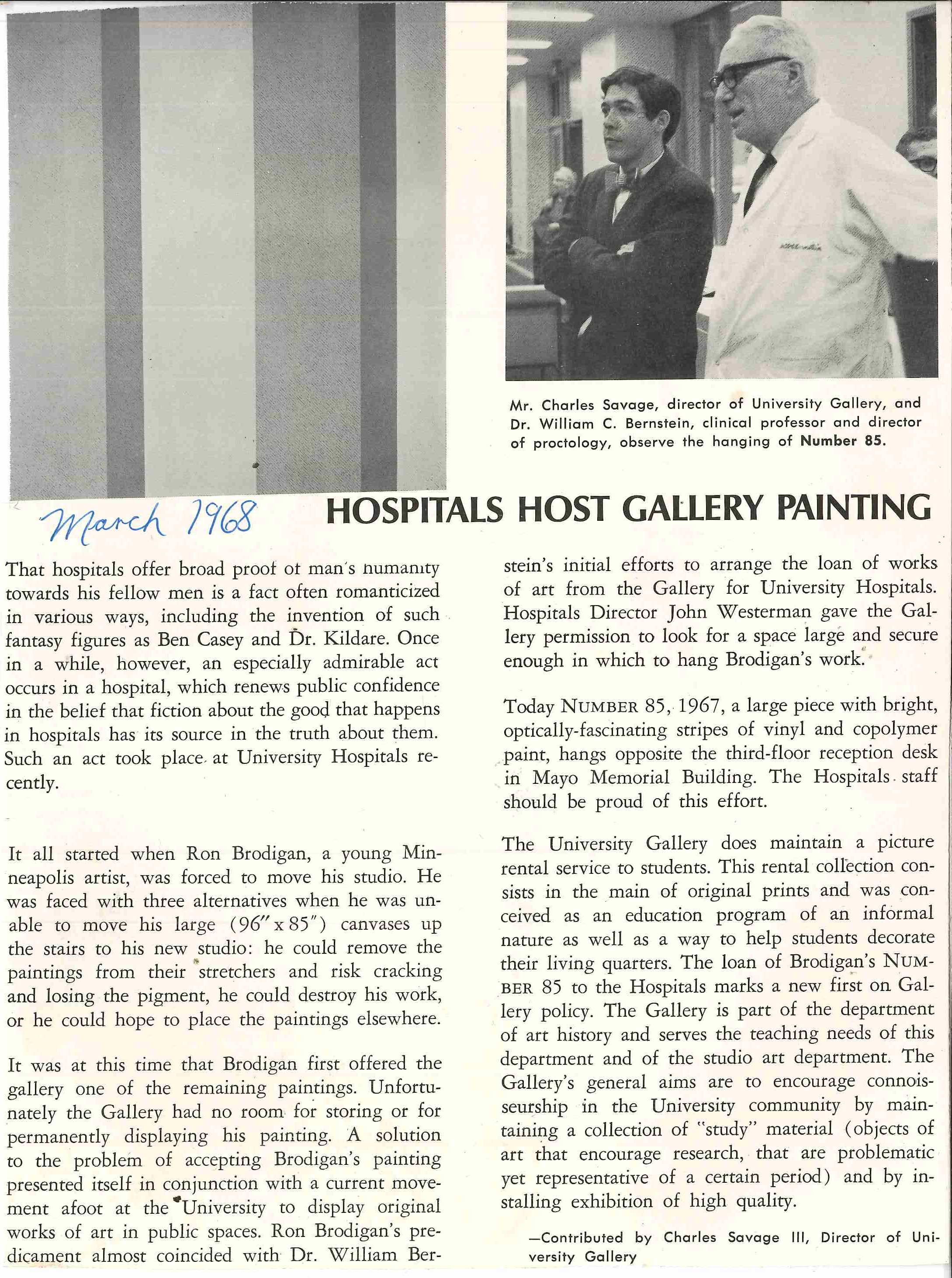
Article from an unknown publication, written by former gallery director Charles Savage III, found in the gallery Publicity Book 1968.
Back to the open letter from Dr. Bernstein: it goes on to describe public reactions to the Brodigan’s painting No. 85 in the lobby:
“”Ye gads! What is this supposed to be?” to “This is just what this lobby needs!”. One professor in the medical sciences asked if the painting was supposed to be some new type of bulletin board. At least, the painting is being looked at, questioned and, at times, admired. The painting is Rob Brodigan’s expression of color – for color’s sake. What, one is often asked, inspires an artist to create such a painting?”
Dr. Bernstein goes on in the letter to articulately trace the possible inspiration for No. 85 from Jackson Pollock to the Washington School Color Painters to Ron Brodigan via the Walker Art Center, concluding:
“Artist Ron Brodigan has created a very meaningful color painting of stripes in mild, gentle colors. Brodigan is a mild and gentle man… but the stir has created in the lobby of Mayo compares favorably with the action resulting from the works of his peers.
You should visit the Mayo lobby but don’t look for an image or a story in the painting. Just stand back and enjoy the action and interaction of color. If the first viewing doesn’t turn you on, please come back — it may happen.”
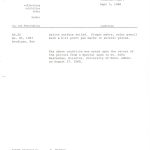
The stir it created? The “happening”? What happened?
A partial answer was found in the accession files of WAM’s registrarial department. Just a few months after Brodigan’s No.85 was installed in the hospital lobby, it was removed due to what appears to be vandalism. The condition report in the WAM accession file states: “Entire surface soiled. Finger marks, color pencil mark & ball point pen marks in several places. The above condition was noted upon return of the picture from Special Loan to Dr. John Westerman, Director, University of Minn. Admin on August 27, 1968.”
But this vandalism and return to art storage isn’t the end of No. 85’s tale.
Painting No. 85 leads a quiet existence–whether back on display or in storage–for following twenty-five years. That is until Brodigan’s No. 85 is on display in a lobby again, this time in Northrop Auditorium circa 1993, when a 30″ gash is inflicted upon the painting in unknown circumstances.
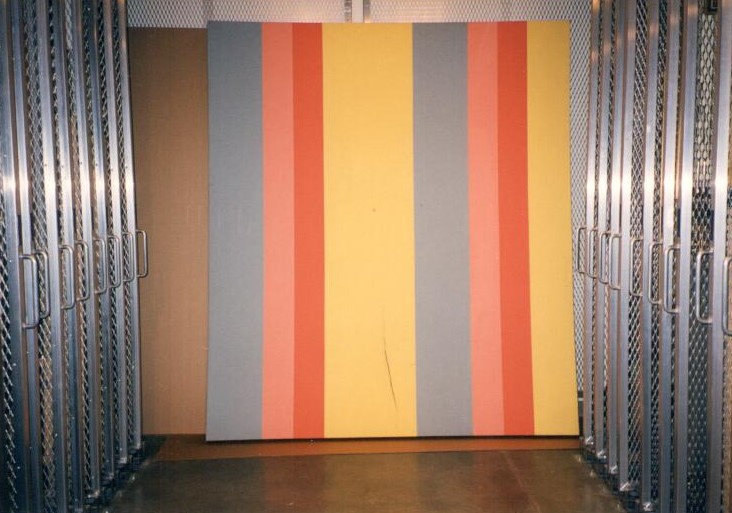
Brodigan’s No. 85 circa 1993 with 30″ gash.
Once again, the painting is removed and brought back to art storage where a new discussion ensues. The painting is large and expensive to store, the repair of the gash would cost substantially more than the painting’s estimated value. However, according to a printed email from the registrar in the accession files, the University Museum’s collection policy at the time stated that deaccessioning could only happen if the work was “bug-infested”. “Deaccessioning” is museum-lingo for removing an item from a collection. There are strict rules of conduct and ethical considerations regarding removing works from a museum collection. These strict guidelines protect the integrity of both the collection and the museum. It is normal for museum collection policies to be routinely evaluated and updated.
This incident with the painting seems to instigate a different conversation about collection policy, crossing years to the opening of the Weisman Art Museum, and may have contributed to the regular process of updating deaccessioning policies for the University’s art collection.
In 1995, Ron Brodigan is contacted about the situation with No. 85 and the options for the artwork going forward which may have included return to the artist, request for funds to repair the work or deaccesioning. The decision was made by all involved to deaccession the work. In this case, while a very unusual outcome for deaccessioning and not without much discussion and debate, deaccessioning included destruction of No. 85.
Rest in peace, mild and gentle, No. 85.
Special thanks to WAM’s registrars-Erin, Rosa and Annette-for all their help.
—Heather Carroll is the processing archivist for the Weisman Art Museum‘s collection at the University of Minnesota Archives. This project was made possible by funds provided by the State of Minnesota from the Arts and Cultural Heritage Fund through the Minnesota Historical Society.
Full letter from Dr. Bernstien the University Community:
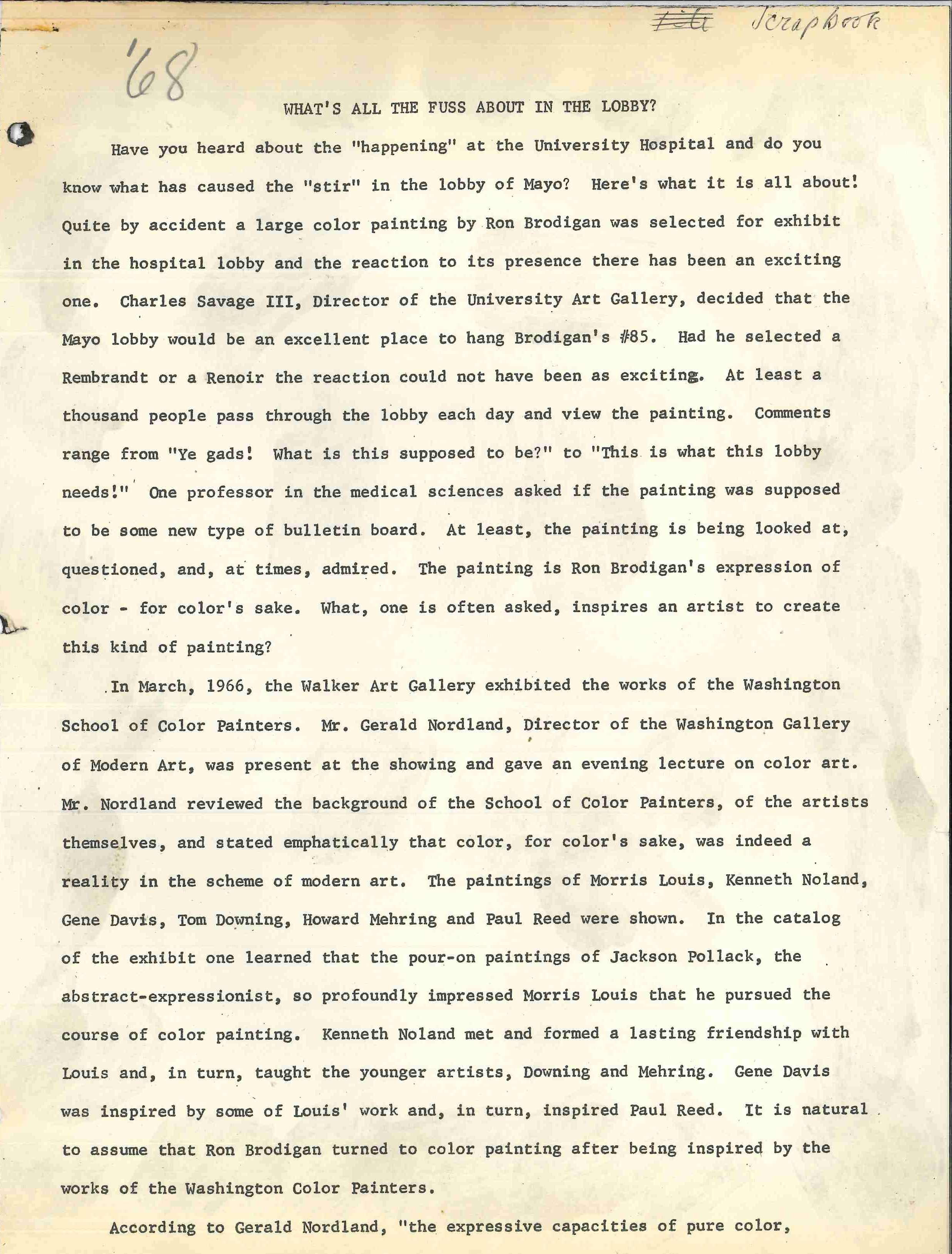
“What’s all the fuss about in the lobby?” Open letter from Dr. Bernstein, page 1.
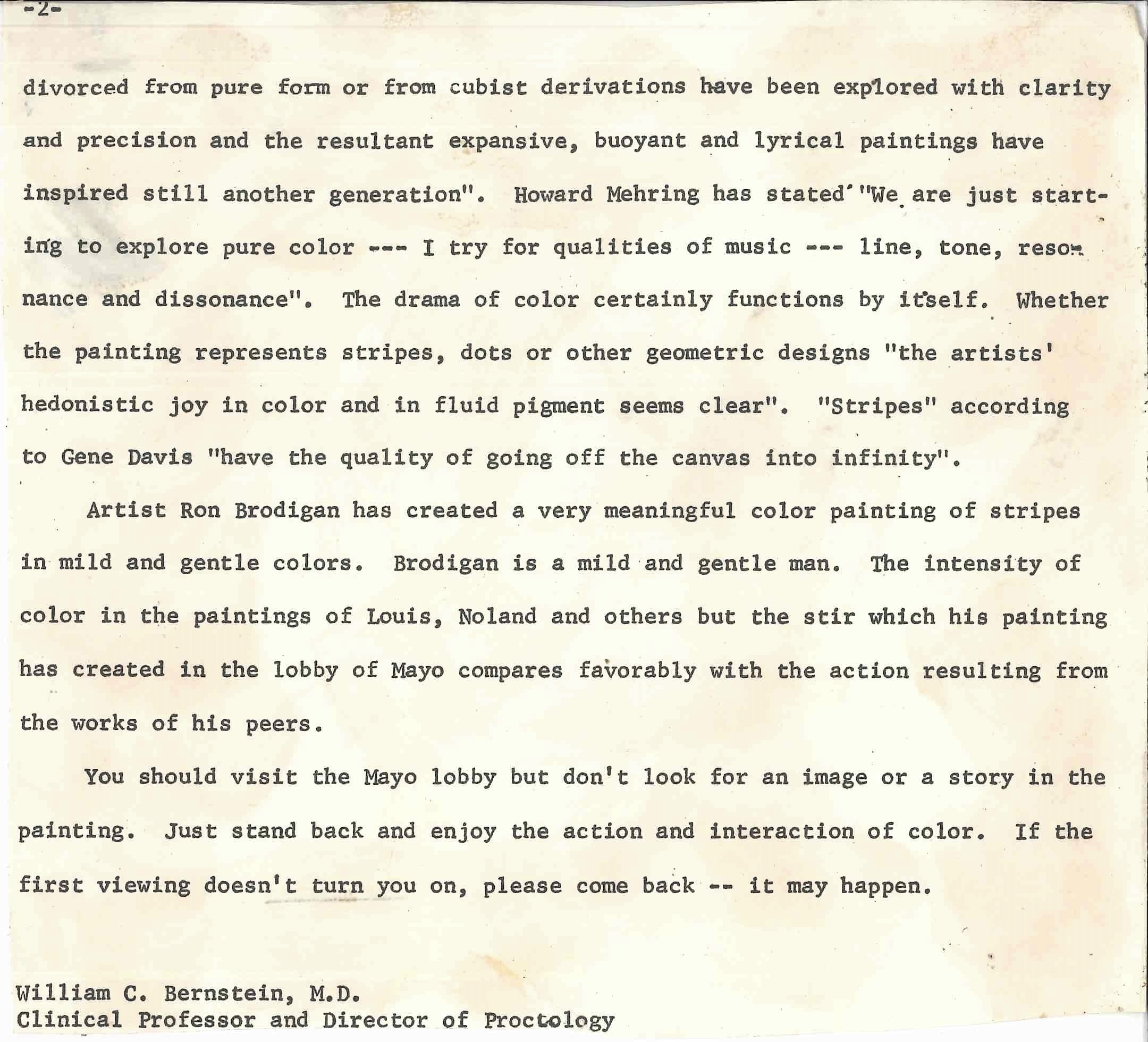
“What’s all the fuss about in the lobby?” page 2.
